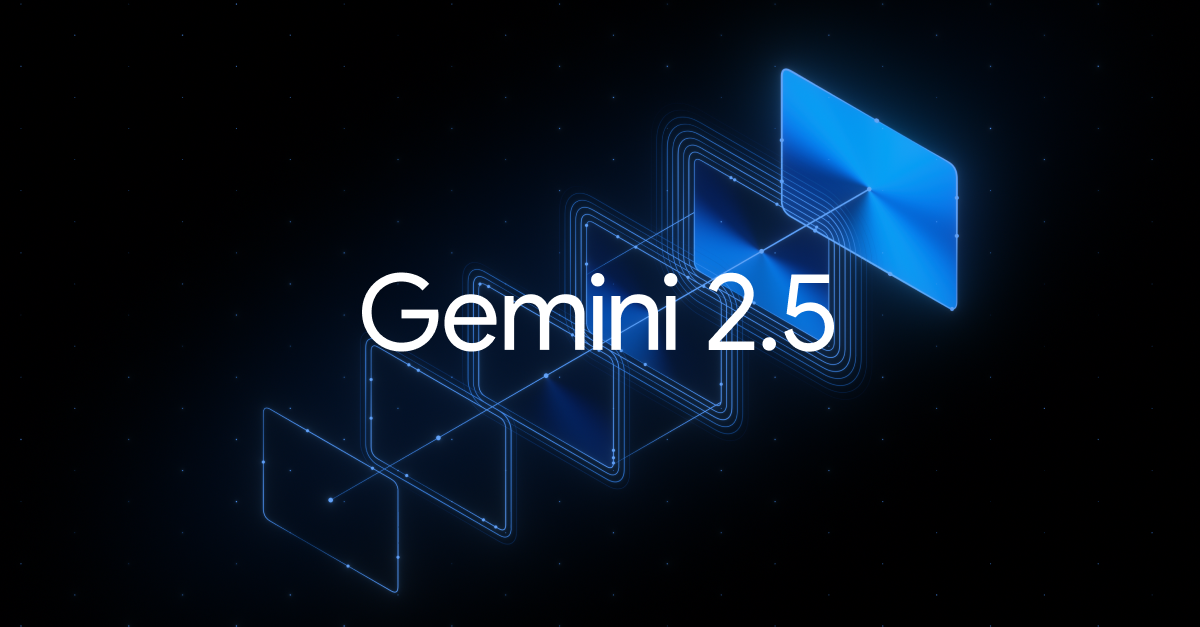Live
Google Pixel 9a launch live blog: review, camera comparisons, deals, and more
We share the best Google Pixel 9a deals, compare our findings with other Pixel 9a reviews, and break down the most important 9a fact to know before you buy one!
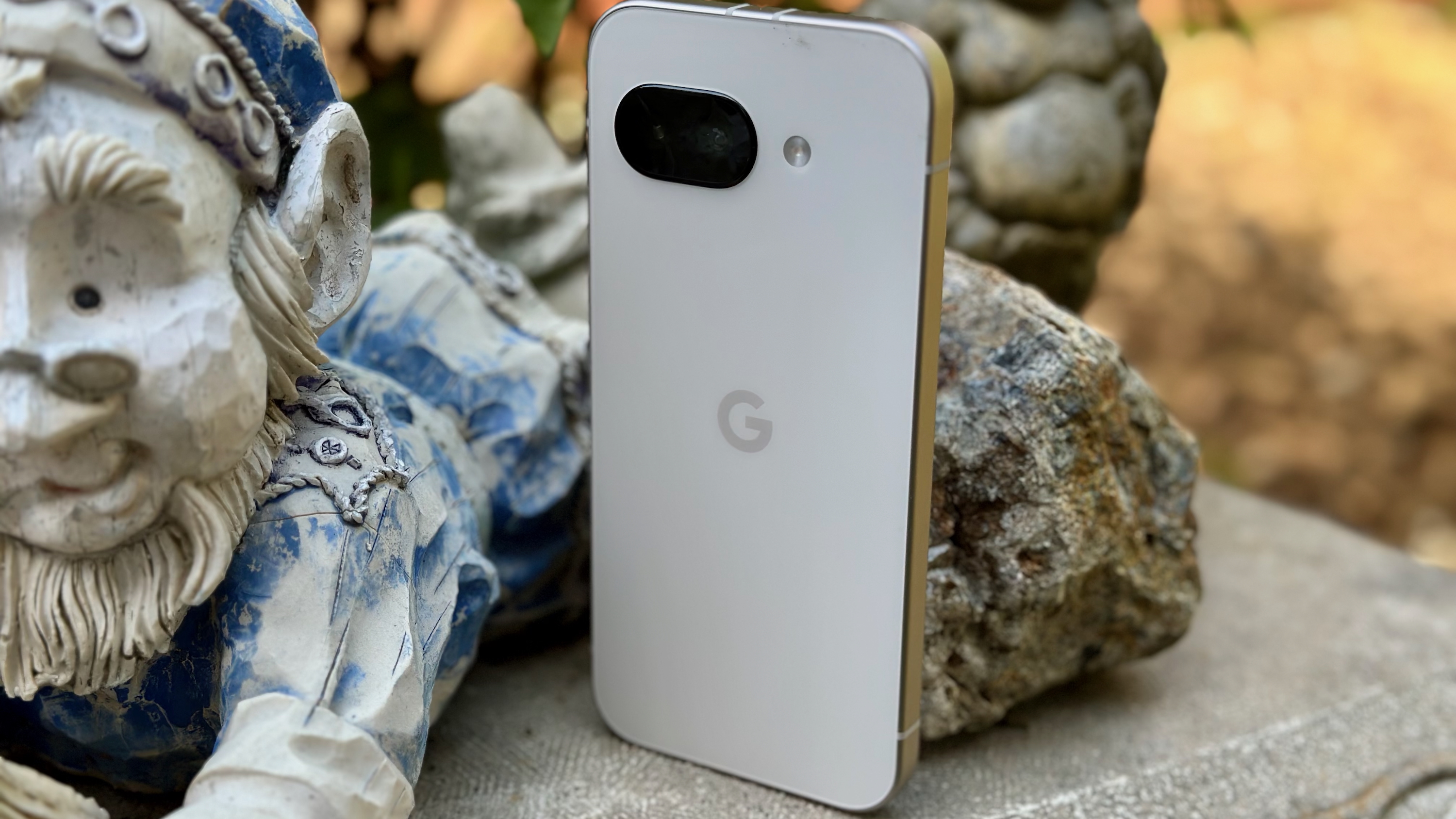
The Google Pixel 9a arrives today, April 10, after Google delayed the 9a launch for weeks. And we have all the info you need, from specs and its best features to how our test results compare to other sites!
Senior Editor Michael Hicks reviewed the latest addition to the Pixel family and we're going to give you all the information you need about the phone and everything else.
Follow us as we talk about the phone and react to Pixel 9a reviews rolling in from around the tech space!
Google Store: Up to $400 of trade-in credit, plus free $100 credit with Pixel 9a purchase
Buy the Pixel 9a directly from the source and you'll be eligible for up to $400 of trade-in credit, potentially knocking the price of the phone down to as low as $99! As if that wasn't enough, the Google Store will also hook you up with a free $100 credit to use on accessories and the like.
- The best Google Pixel 9a deals of April 2025: free phones, epic trade-in opportunities, and more
- Our Google Pixel 9a review!
10 key Google Pixel 9a specs
- Price: $499 / £499 / €549 / CA$679 / Rs 49,999
- Software: Launches with Android 15, will update to Android 22 and security through 2032
- Processor: Tensor G4 (same as Pixel 9)
- Memory: 8GB RAM, 128GB UFS 3.1 storage
- Display: 6.3-inch pOLED, 422 PPI, 120Hz, 1,800 HDR nits
- Cameras: 48MP Quad PD Dual Pixel, 13MP UW, 13MP front
- Connectivity: 5G, Wi-Fi 6E, NFC, no UWB
- Battery: 5,100mAh (8a was 4,492mAh) with 23W charging
- Protection: IP68, Gorilla Glass 3
- Colors: Obsidian, Porcelain, Peony, Iris
LIVE: Latest Updates
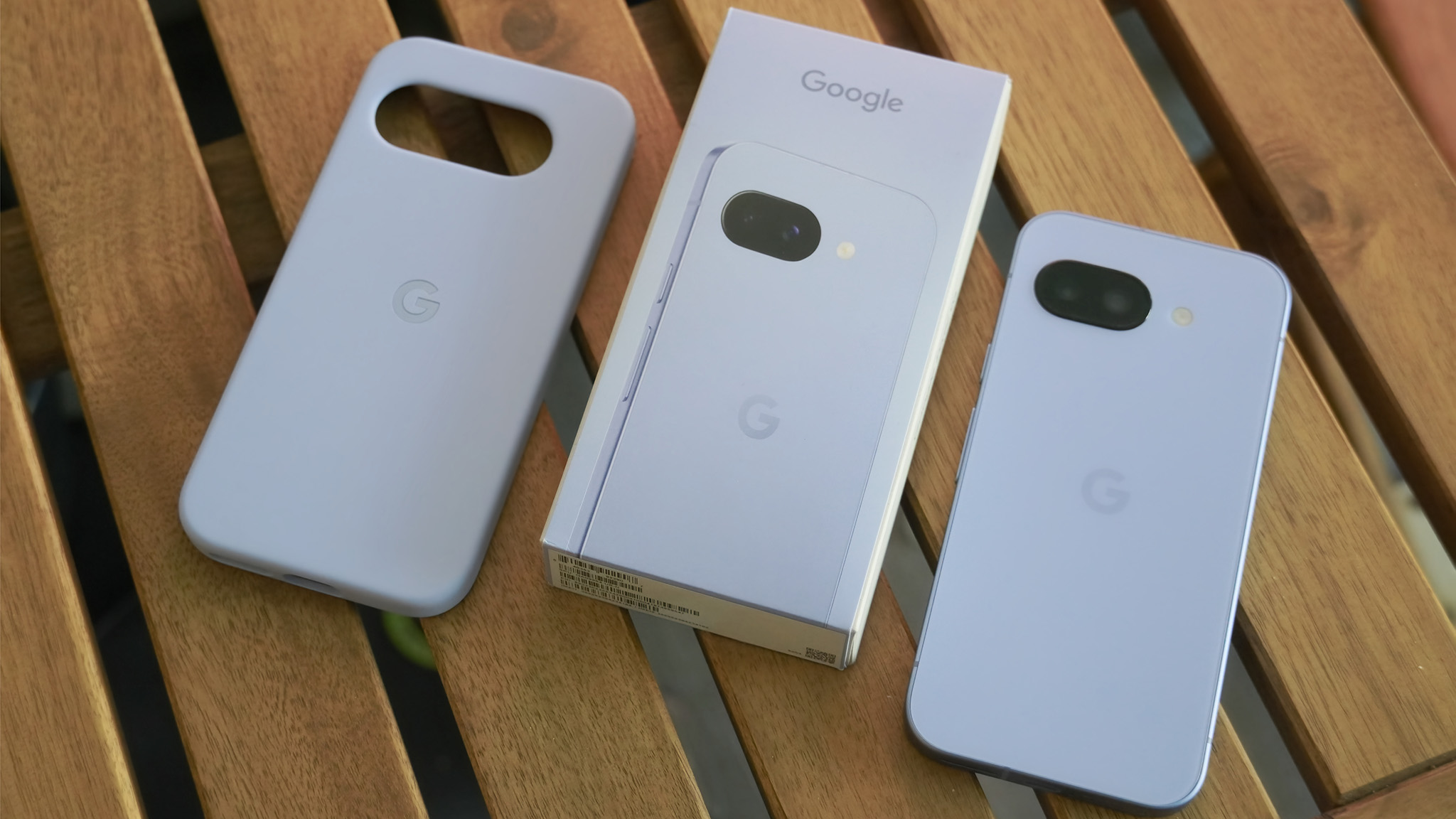
Looking for some accessories to pair with the Google Pixel 9a? There's the official silicone case, which only costs $30 and will perfectly match the Pixel 9a color and finish of your choice. It's slim and soft, and makes the back of the Pixel 9a completely flat once the case is installed. From there, you'll want to check out the $99 Pixel Buds A-series and the Pixel Watch 3 for your audio and smartwatch needs.
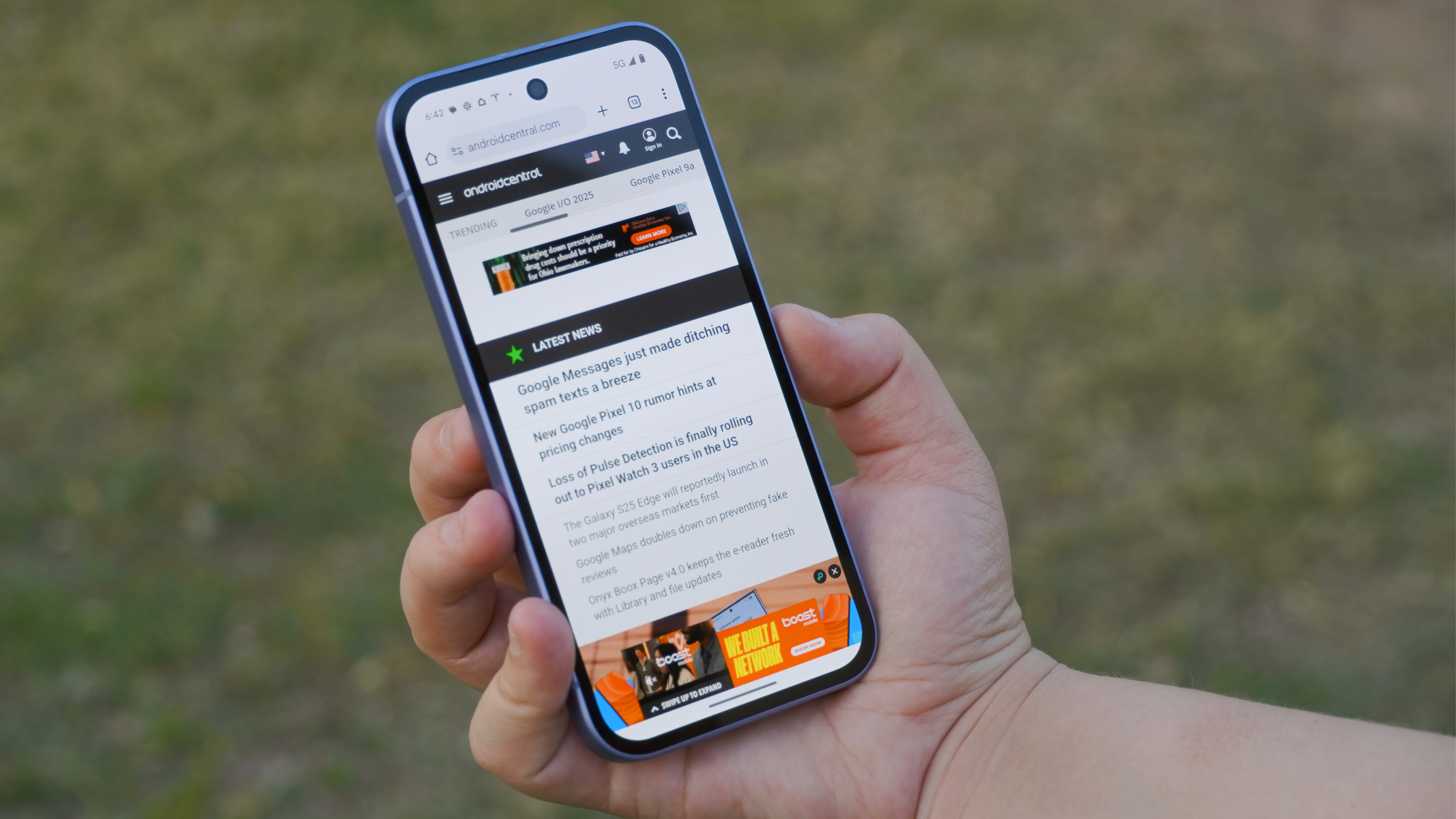
Hours deep into Google Pixel 9a launch day, there still are plenty of ways to get your hands on a new phone quickly. In fact, the Pixel 9a is available for in-store pickup at select Google Store locations today, including at Google's NYC Williamsburg and Chelsea stores. Depending on your location, you could be looking at delivery dates for all Pixel 9a colors around April 16 or April 17 — about a week away.
Google Store is also offering a limited-time promotion that'll net you $100 store credit toward your next purchase when you buy an unlocked Pixel 9a.
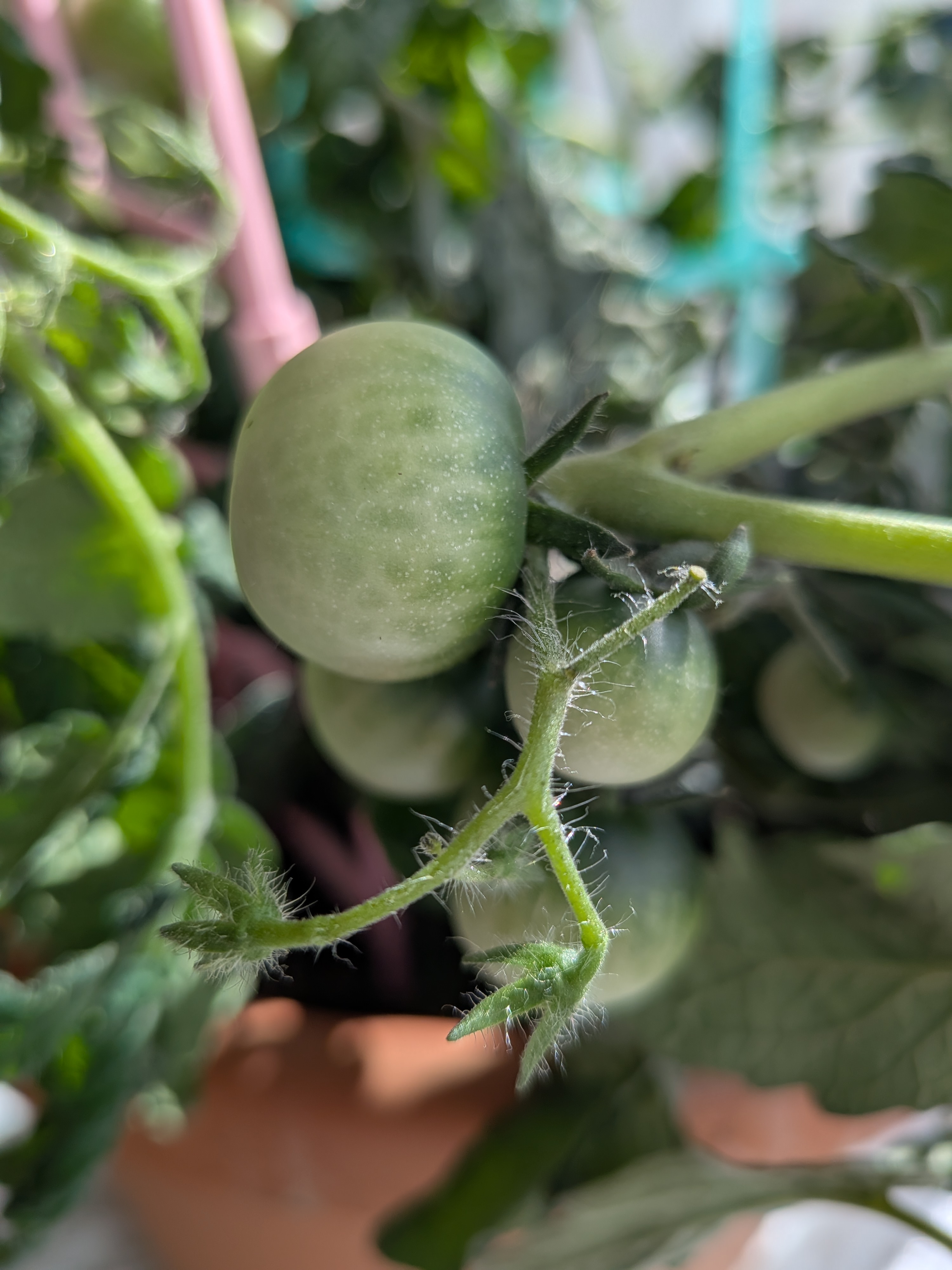
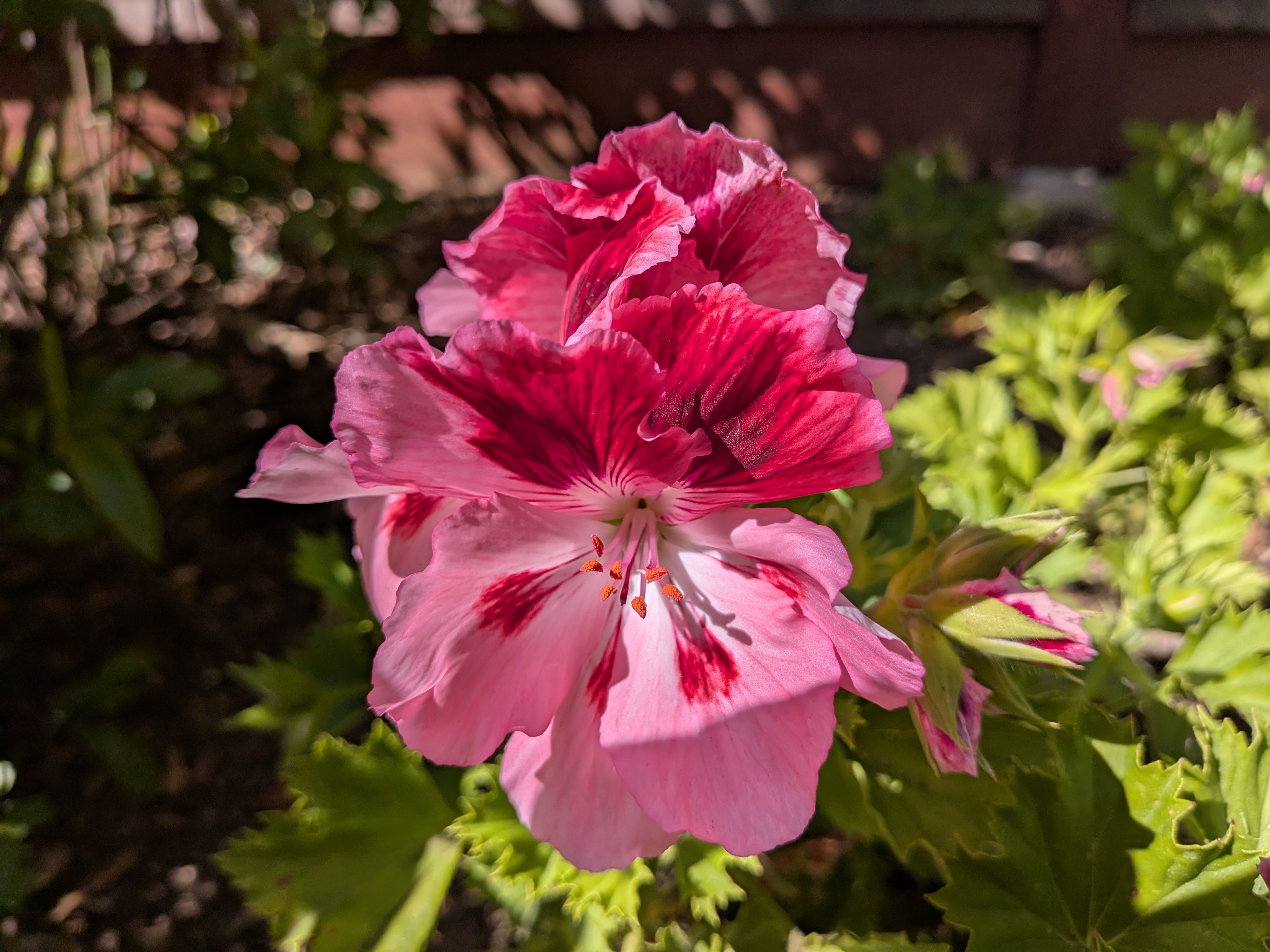
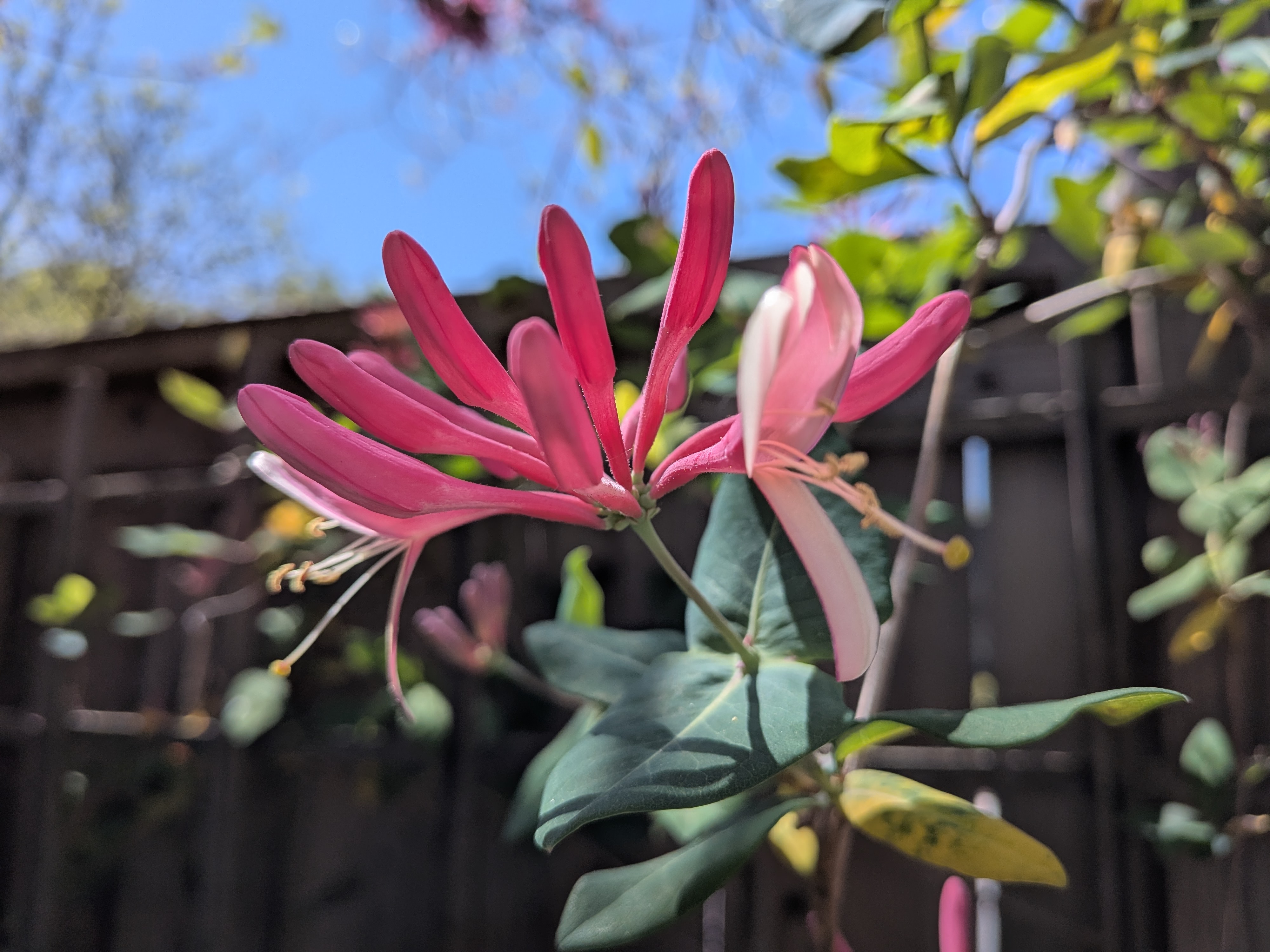
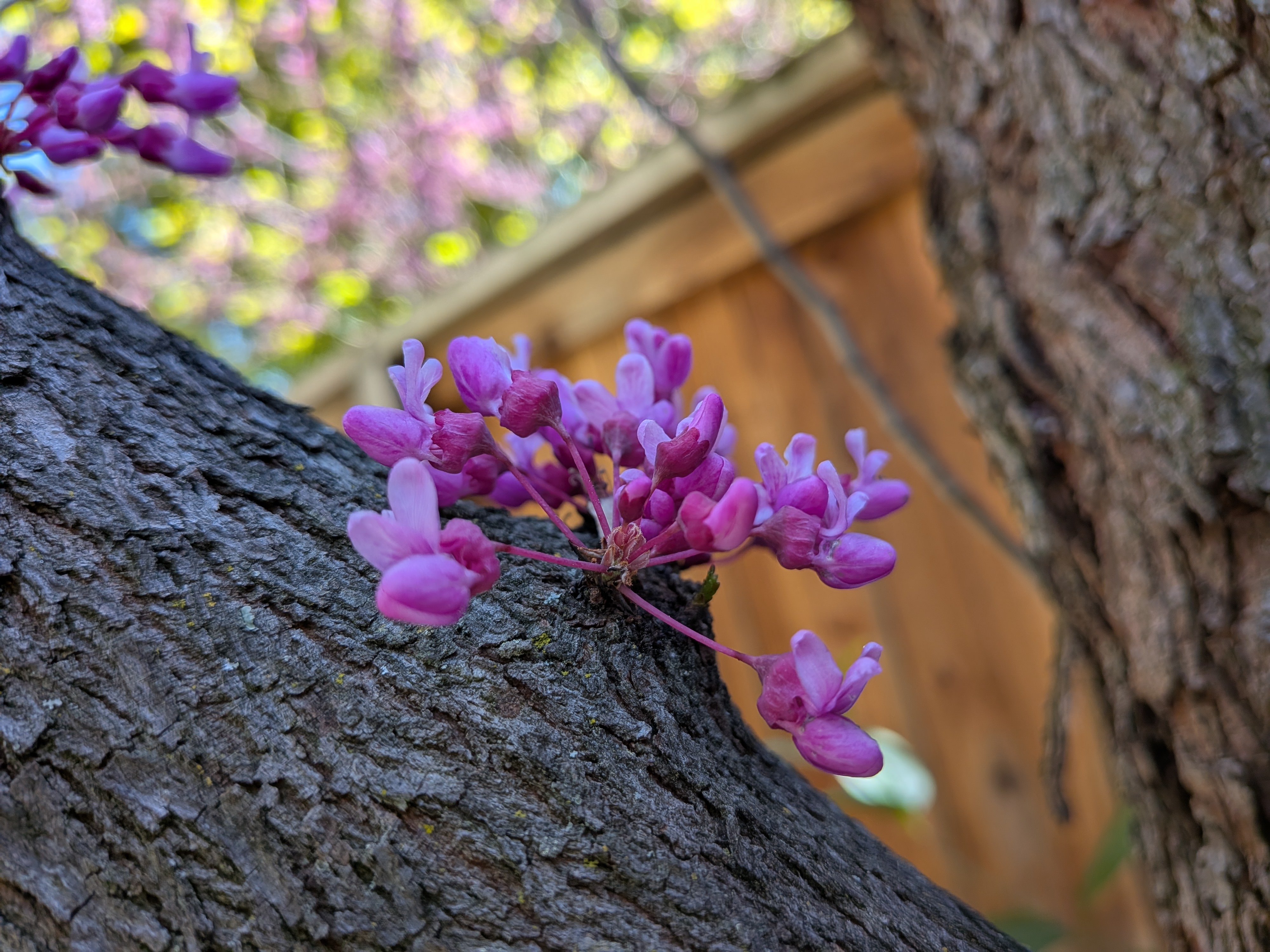
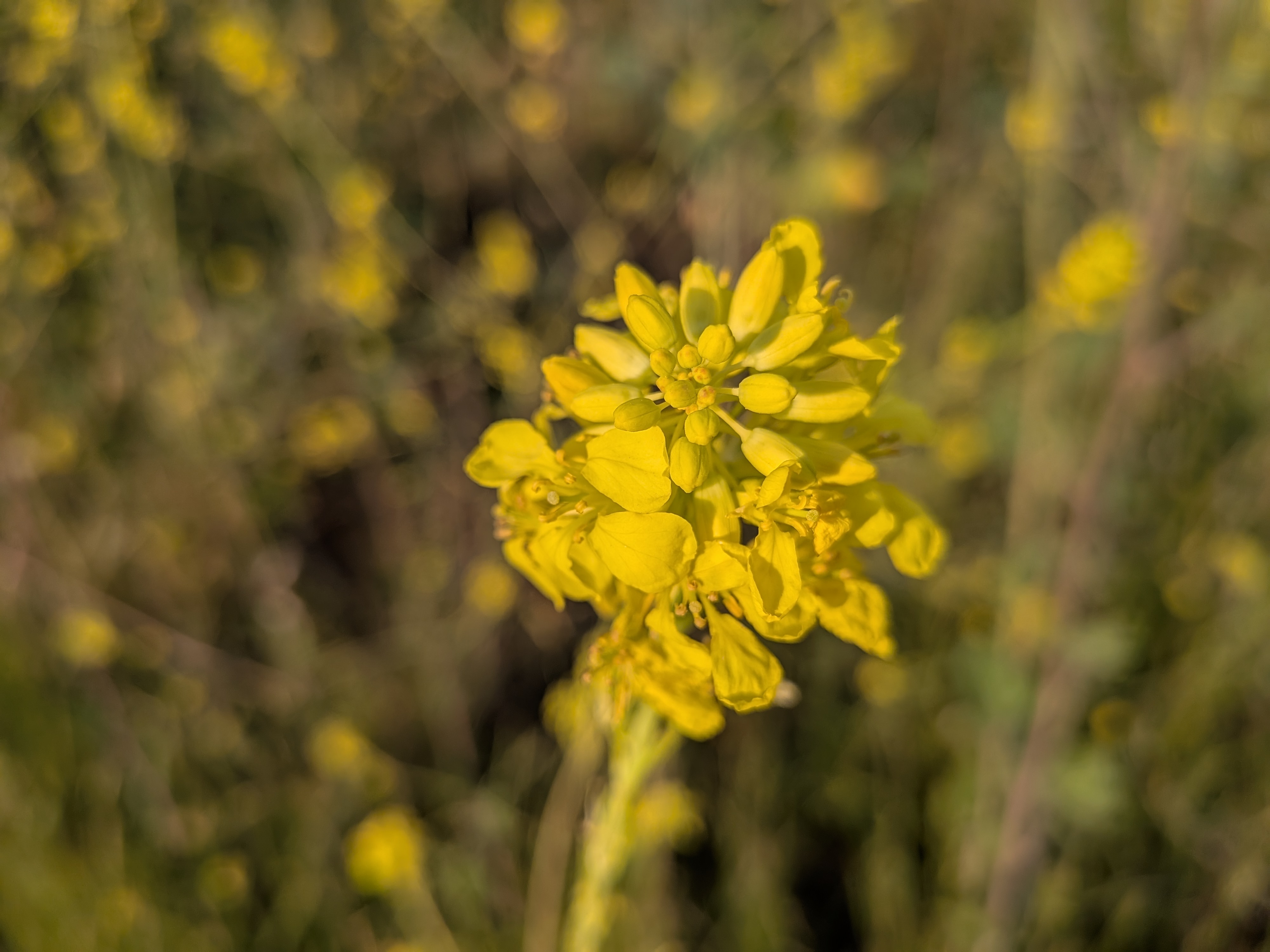
After thoroughly testing the Google Pixel 9a, the impressive new feature that stands out to me is Macro Focus. To be clear, the feature isn't new, appearing on the rest of the Pixel 9 series and even Pixel phones older than that. However, the Pixel 9a represents the first time an A-series phone gets to use Macro Focus.
Google now uses the main, 48MP camera for Macro Focus on the Pixel 9a. Previously, the Pixel 8a used the 13MP ultrawide lens to create pseudo-macro shots that didn't turn out that amazing. Meanwhile, the experience with Macro Focus on the Pixel 9a couldn't be more different. It's not a gimmick — it really provides a stunning level of detail, down to the hairs on a tomato plant.
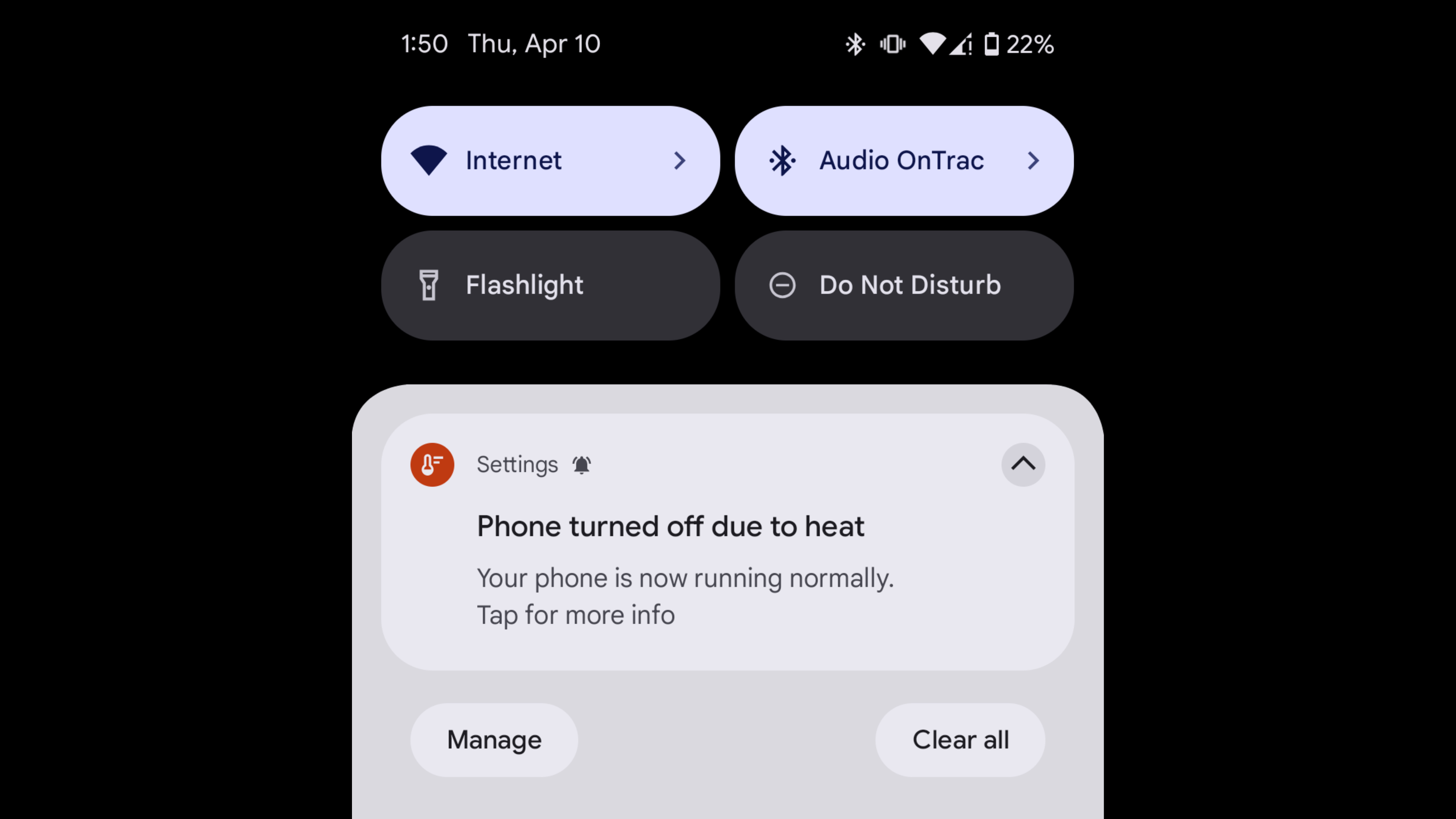
Overheating has been an all-too-common problem on past Google Pixel phones, but what about on the new Pixel 9a? Like the other Tensor G4-powered phones, the Pixel 9a usually operates fine even in tough conditions. However, that's not to say it won't ever overheat. I happen to live in Phoenix, Arizona, which is an absolutely grueling climate for anything with a battery.
Today, it's 97-degrees Fahrenheit, and I made the mistake of leaving my Pixel 9a in direct sunlight for about 10 to 15 minutes. The screen was off, but the phone ended up shutting down completely and restarting after that span. To be fair, my M2 MacBook Air crashed less than a minute afterward, so this isn't a Pixel 9a problem. It is something to keep in mind if you live in an unusually-hot climate, though.
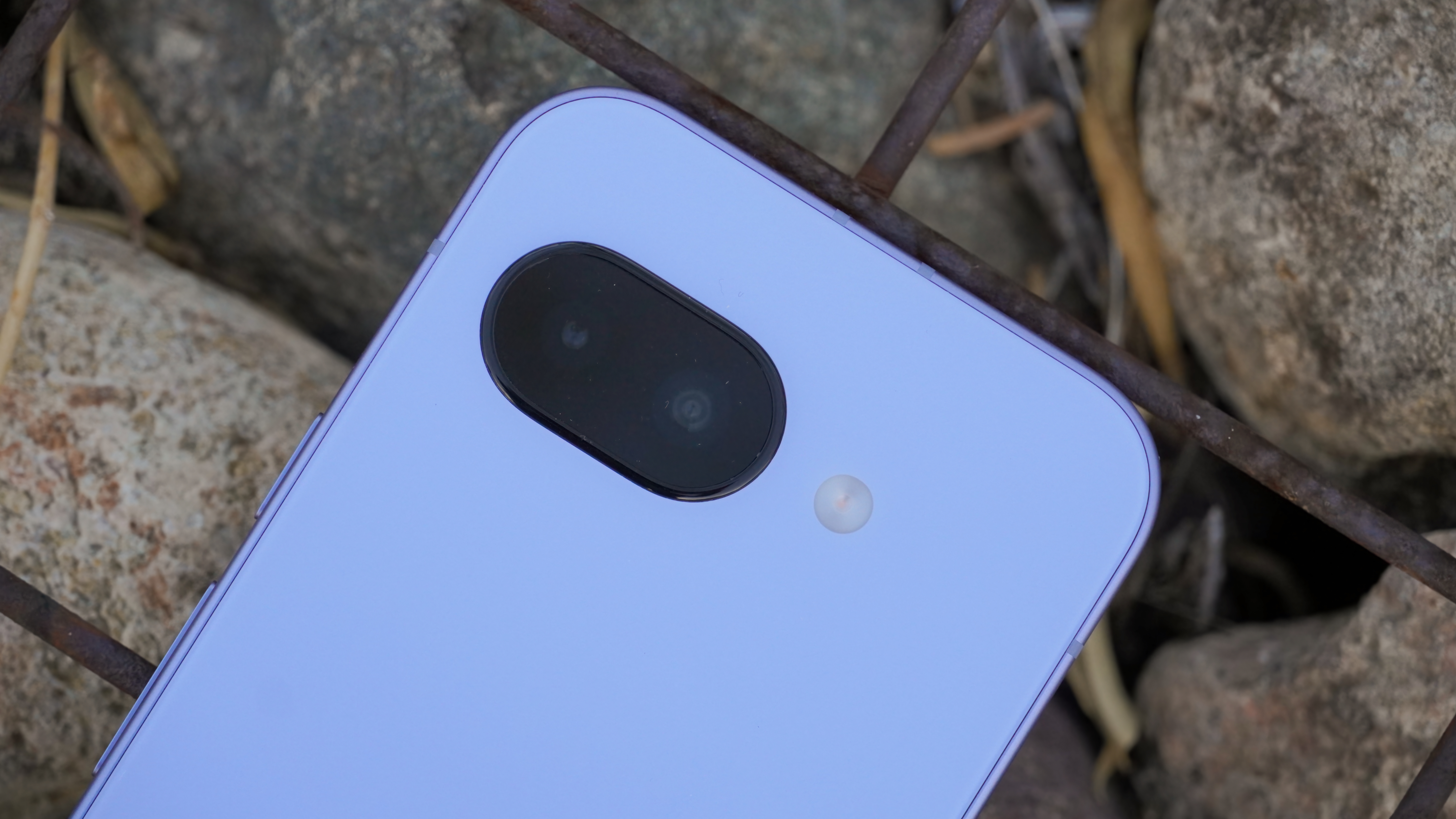
The Google Pixel 9a's controversial design has been well-chronicled, and I can't decide whether I love it or hate it. One thing's for sure — if Google wanted to go for a flat back, it should've made the Pixel 9a completely flat. Instead, the company split the middle, creating a phone that's nearly flat with a slight protrusion for the cameras coming out of the polycarbonate plastic back.
This causes a few real-world issues. I've noticed that the tiny crack between the glass camera covering and the plastic trim quickly becomes a dust magnet, capturing all the lint in your pocket. Additionally, the Pixel 9a's rear camera covering seems more prone to getting covered in dust or scratches due to the design. For reference, while the Pixel 9's camera bar protrudes from the phone's back glass, the camera glass is actually slightly recessed in that aluminum bar.
It's something to consider before buying a Pixel 9a, but I don't think it should be a dealbreaker.
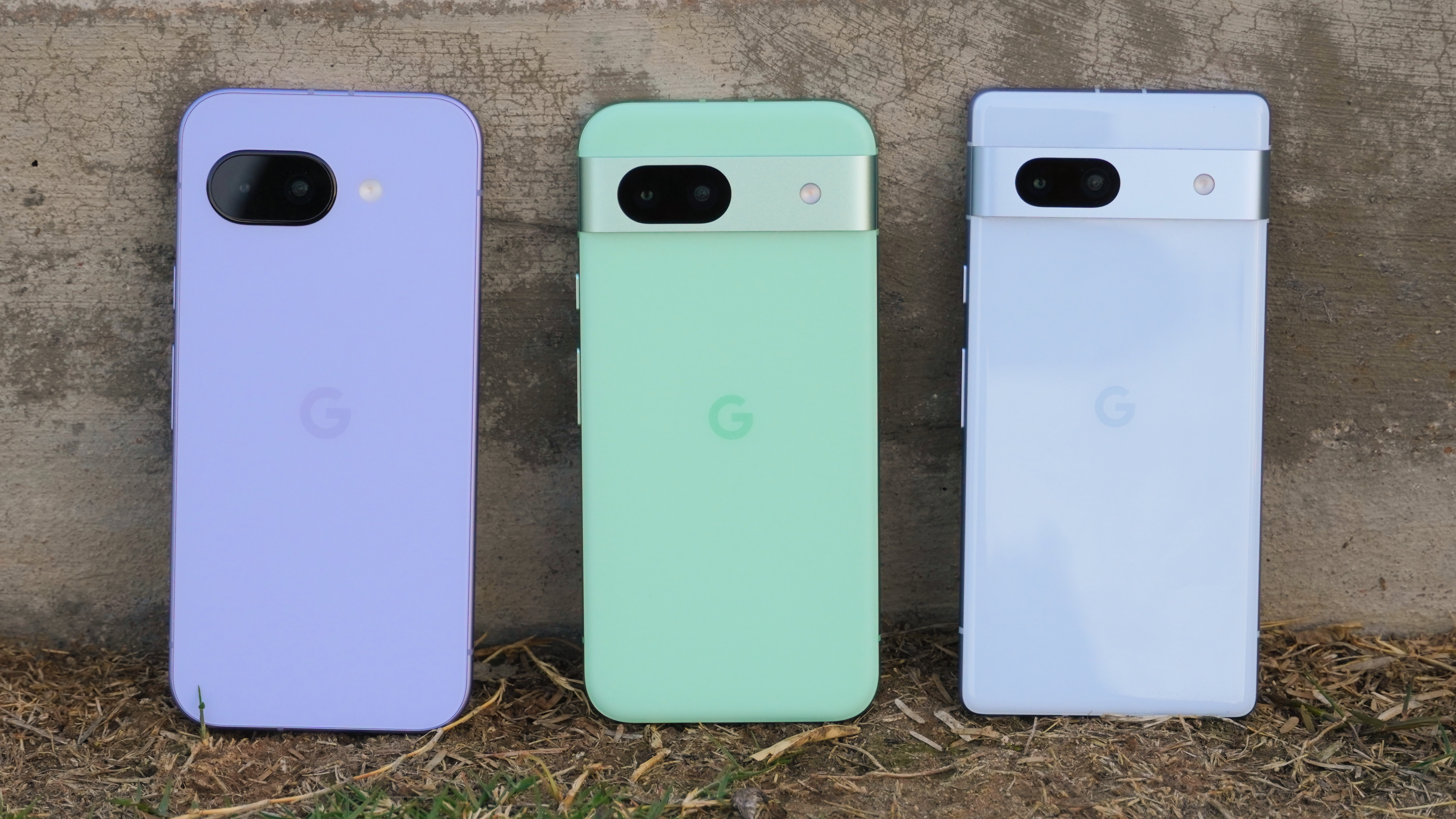
Plenty of testers, including those at Android Central, have praised the Pixel 9a's new pOLED screen on the Google Pixel 9a, and for good reason. It's the brightest A-series phone ever, topping out at 2,700 nits of peak brightness. If that wasn't enough, it also happens to sport the exact same resolution as the regular Pixel 9. The bezels are bigger on the Pixel 9a, but that fades away pretty quickly when you start using the device.
However, the bigger deal might be that the Pixel 9a now has a 6.3-inch screen for the first time. The Pixel 8a and Pixel 7a both had 6.1-inch displays, which made them a smaller and more compact offering. Now, the Pixel 9a and the Pixel 9 have the same exact screen size, further reducing the differences between models. Do you think Google should've stuck with a more compact form factor for the A-series?
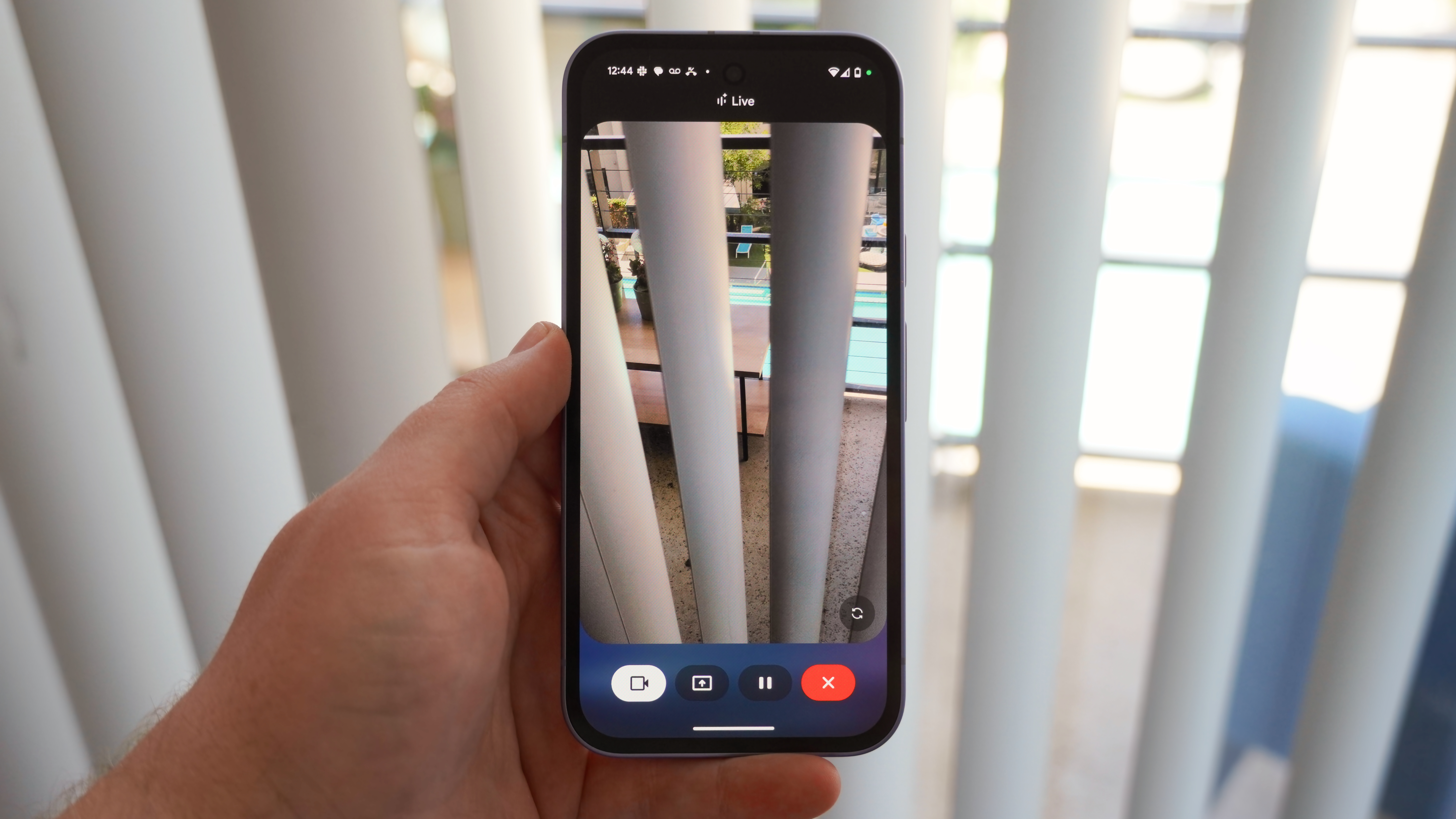
The Google Pixel 9a's memory limitations mean that it can only run Gemini Nano XXS, a smaller and less powerful AI model than the rest of the Pixel 9 series. The good news is that these shortcomings won't affect the Pixel 9a's off-device AI capabilities, like with Gemini Live. The Pixel 9a gets the same Gemini Live with video streaming and screen sharing experience as all the other Pixel 9 and Galaxy S25 series phones, which is impressive at the $499 price point.
More importantly, Gemini Live with video streaming and screen sharing is completely free on the Pixel 9a. Phones from other brands, including older Pixel and Galaxy models, won't get the features free-of-charge. They'll need to pay $20 per month for the Google One AI Premium plan. The Pixel 9a's inclusion of all the latest Gemini Live features is yet another reason why it pays to opt for Google's midranger over the competition.
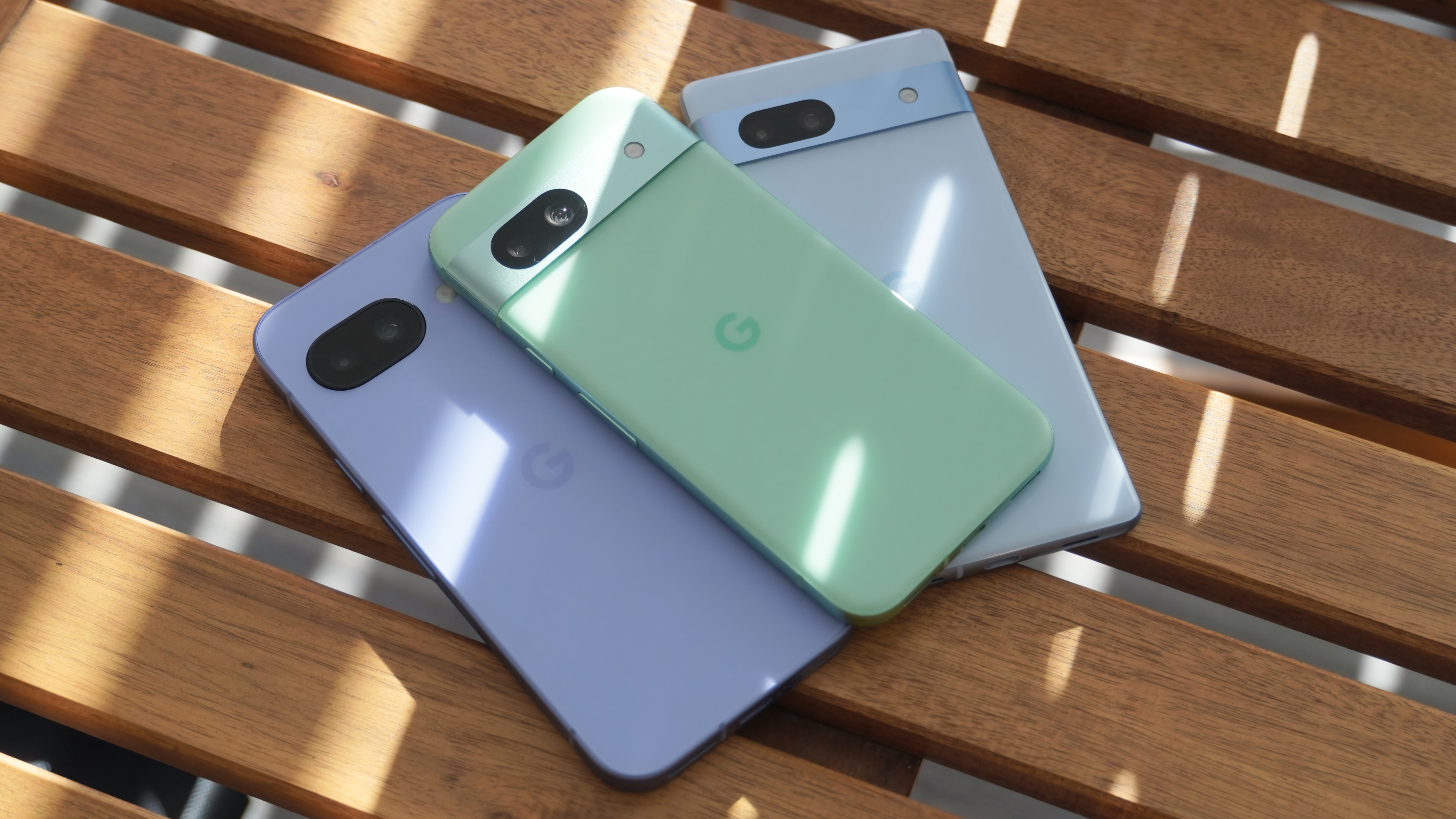
Google did something great with this year's Pixel 9a — it is offering storage upgrades in more colors for the first time. On paper, you'll see that the Google Pixel starts at $499 for 128GB of storage, and can be upgraded to 256GB of storage for an extra $100. They're the same storage configurations as last year.
What's different? This year, you aren't stuck buying the Obsidian (Black) colorway if you want extra storage space. With both the Pixel 7a and Pixel 8a, the 256GB storage option was only available for the Obsidian color, limiting your options. Now, you can get the Pixel 9a in 256GB in either the Iris or Obsidian colorways.
The Porcelain and Peony colors are still only available as 128GB models, but this slight expansion is a good start for Google's A-series.
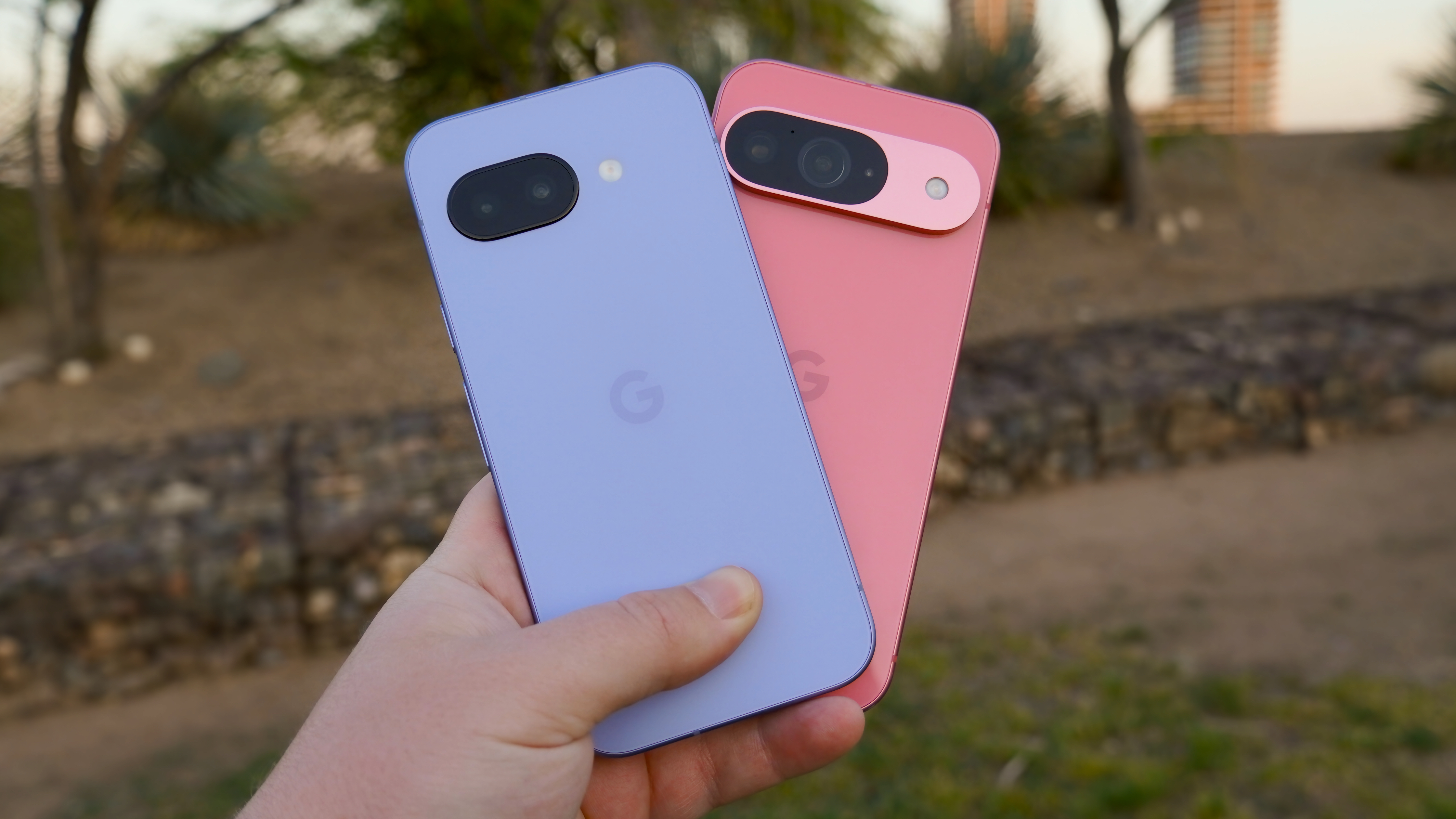
Hey all, it's Brady Snyder taking over, and I've spent the better part of two weeks testing my Google Pixel 9a review unit in comparison to its biggest competitors — including the Pixel 9, Pixel 8a, Pixel 7a, and Nothing Phone 3a Pro. To start, I want to talk about how the Pixel 9a shakes up against the Pixel 9, which only costs slightly more after deals and promotions.
You're going to hear a lot about how the Pixel 9a has 8GB of RAM, which is four gigabytes fewer than the Google Pixel 9. That means it should perform worse than the Pixel 9, right? Wrong. I was stunned that the Pixel 9a consistently performs better than the Pixel 9 in synthetic benchmark tests, like Geekbench 6.
Benchmark | Google Pixel 9a (Tensor G4, 8GB RAM) | Google Pixel 9 (Tensor G4, 12GB RAM) |
|---|---|---|
Geekbench 6 (single-core) | 1,728 | 1,722 |
Geekbench 6 (multi-core) | 4,443 | 4,360 |
That means if you don't care about new AI features — like Pixel Screenshots and Call Notes, which are missing — the Pixel 9a is a more than capable daily driver.
You can check out my full breakdown of how these two phones compare here.
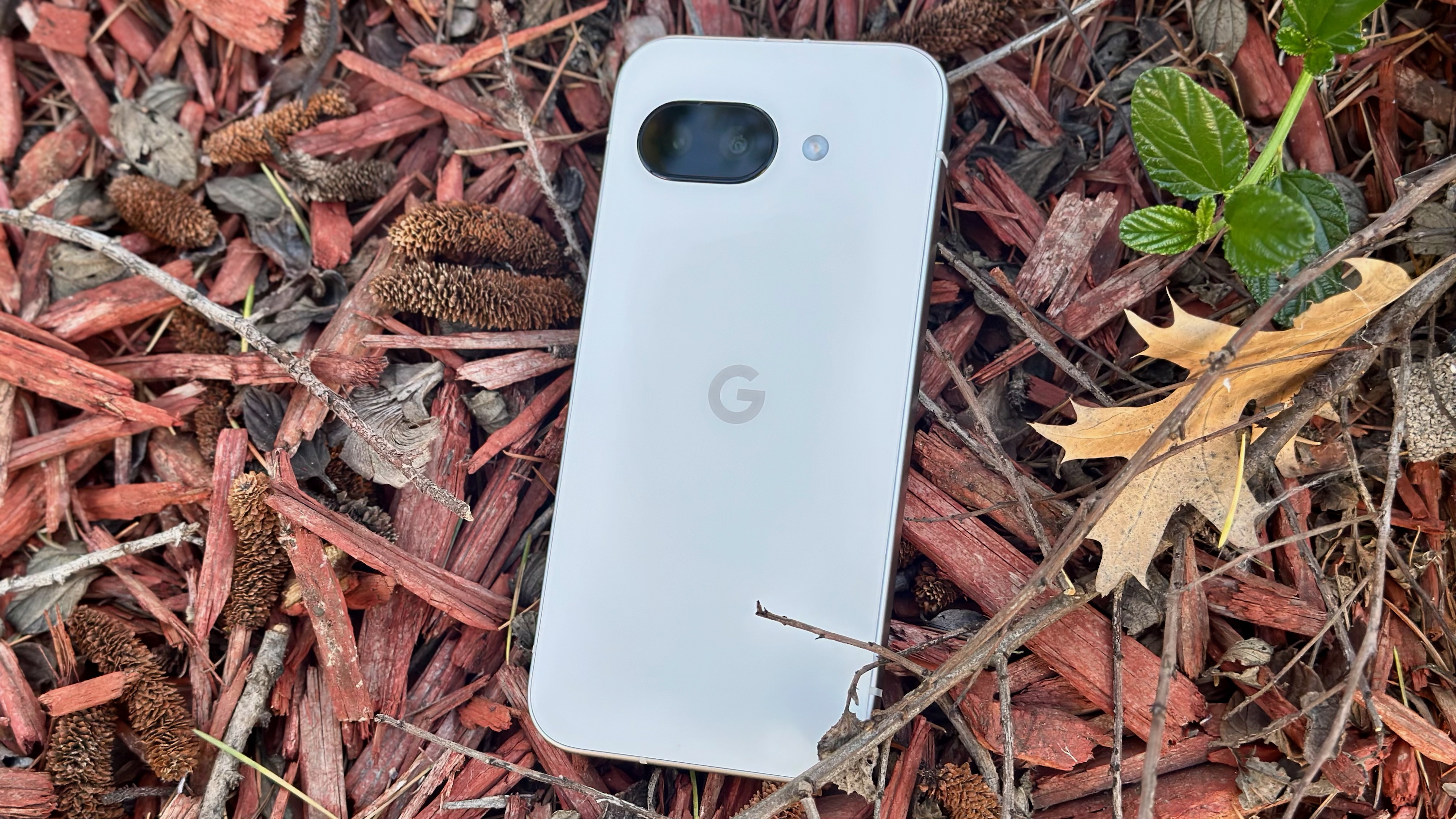
One of the big questions with the Pixel 9a was with its last-gen Exynos modem, which is slightly older than the 5400 found in the Pixel 9 series.
The challenge with "reviewing" a modem is that it's highly situational. My Bay Area coverage is fairly comprehensive so that the Pixel 9a rarely struggled with cellular connectivity or excess battery drain throughout my testing period; nor did Brady experience any issues yet. But if you've had problems with the Pixel 8a, it's fair to assume that the 9a will have similar issues.
You also get Wi-Fi 6E support; I find that more than sufficient but people with Wi-Fi 7 routers will disagree.
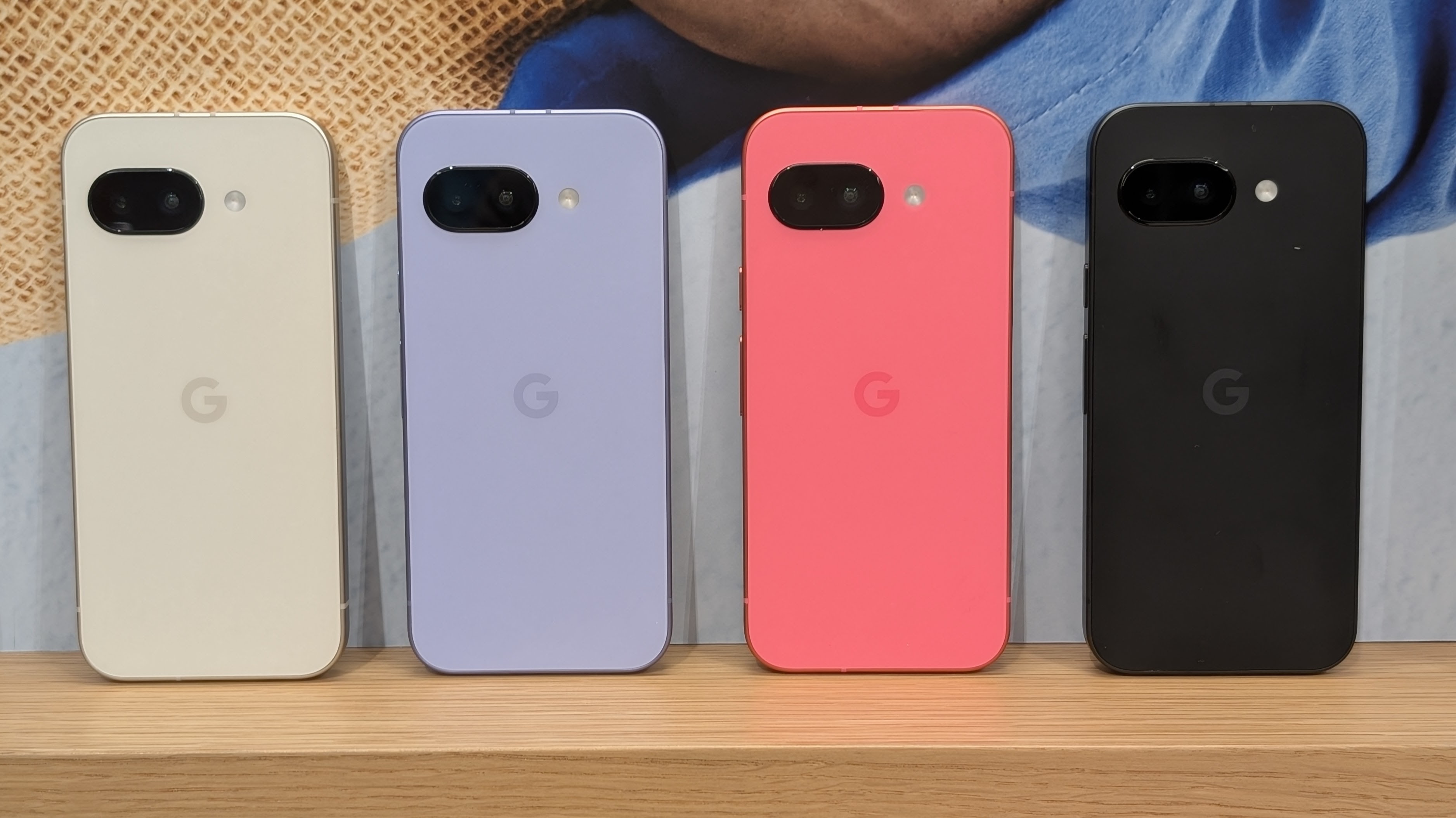
Let's talk Pixel 9a colors. Google sent me the Porcelain Pixel 9a, and hoo boy is it the worst of the four. Obsidian (black) is inoffensive and makes the camera sensor blend in more seamlessly, while this off-white Porcelain model only makes the 9a's slab look more apparent.
Google sent Brady the Iris model, which I think must indicate that they like him better than me. If I were to buy a 9a, I'd choose Iris because the soft blue gives it a bit of personality without being quite as gaudy as Peony — which is kind of fun but trends a bit too close to cotton candy coloring for my personal tastes.
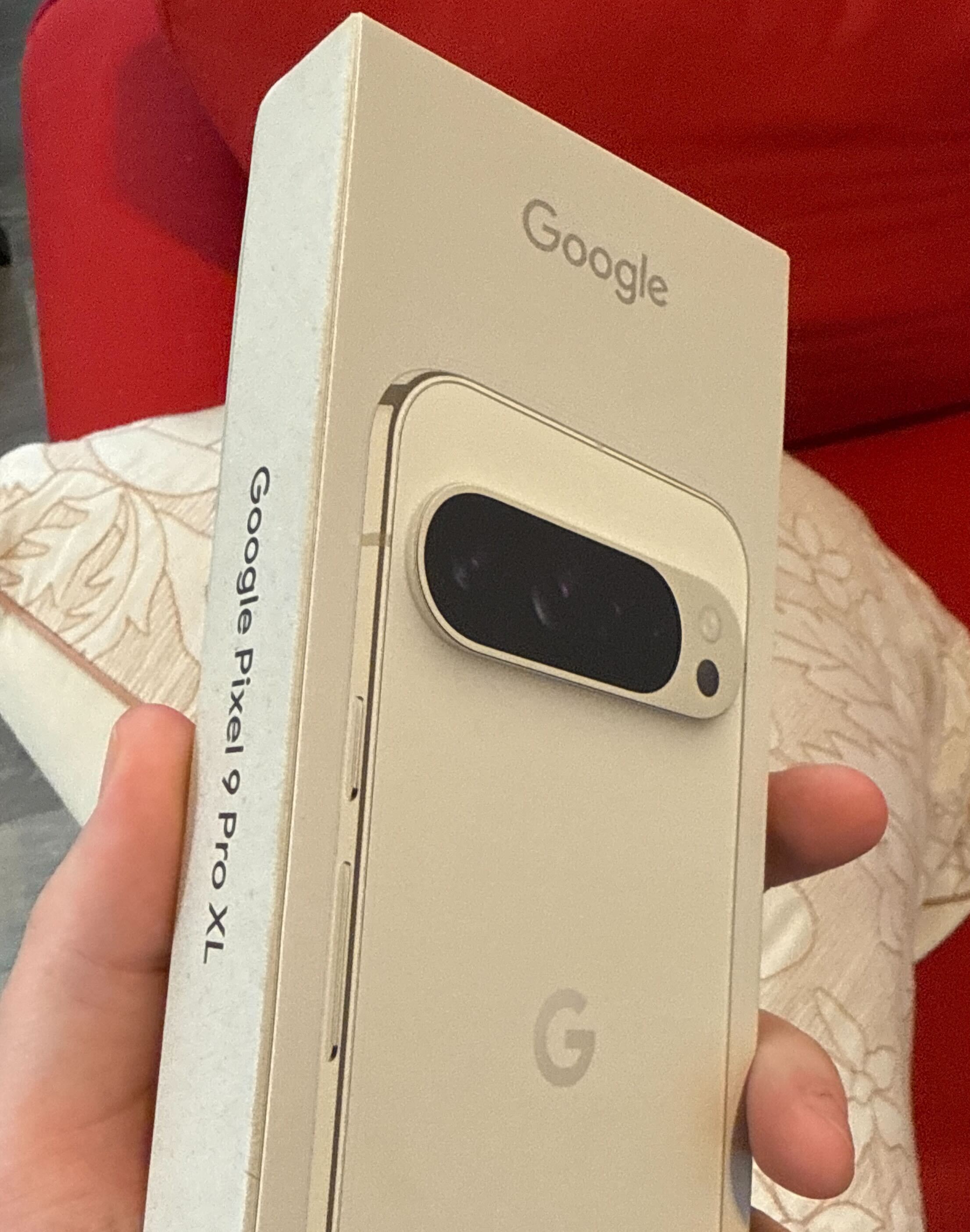
Ready to chuckle at Google? Here's the "replacement Pixel 9a" that Google just sent to Brady.
Some background: He's been testing the Pixel 9a as well, and he's had issues with the under-display fingerprint sensor refusing to acknowledge his biometrics, even after rescanning them. Google said it must be a defective unit and promised to send him a new Pixel 9a. Instead, he got a Pixel 9 Pro XL, which was definitely a shipping error but feels like Google is trying to subtly tell us something 😂.
In all seriousness, I haven't had any issues with the fingerprint sensor, and glancing over a dozen other Pixel 9a reviews, no one else has mentioned it. So it's entirely possible that it is a rare hardware error rather than anything to worry about. But if you end up having problems, send it back to Google and you might get an accidental $600 upgrade.

A couple of Pixel 9a reviews and posts — including CNET, Wired, and The Verge — have referenced the recent threats of tariffs, saying that the $499 Pixel 9a is coming at "the right time" and hoping that price doesn't change. Google told CNET that "there are no changes to the pricing and availability of the Pixel 9A" related to tariffs, at least for now.
Without diving into the complicated politics and worsening trade fight between the U.S. and China, it's fair to say that the Pixel 9a should remain at $499 in the short term, but that most tech brands will pass off tariff costs to the consumer if things do escalate.
So aside from the fact that carriers and the Google Store are offering good Pixel 9a pre-order deals, you may want to buy a 9a now, simply to lock in that affordable price.

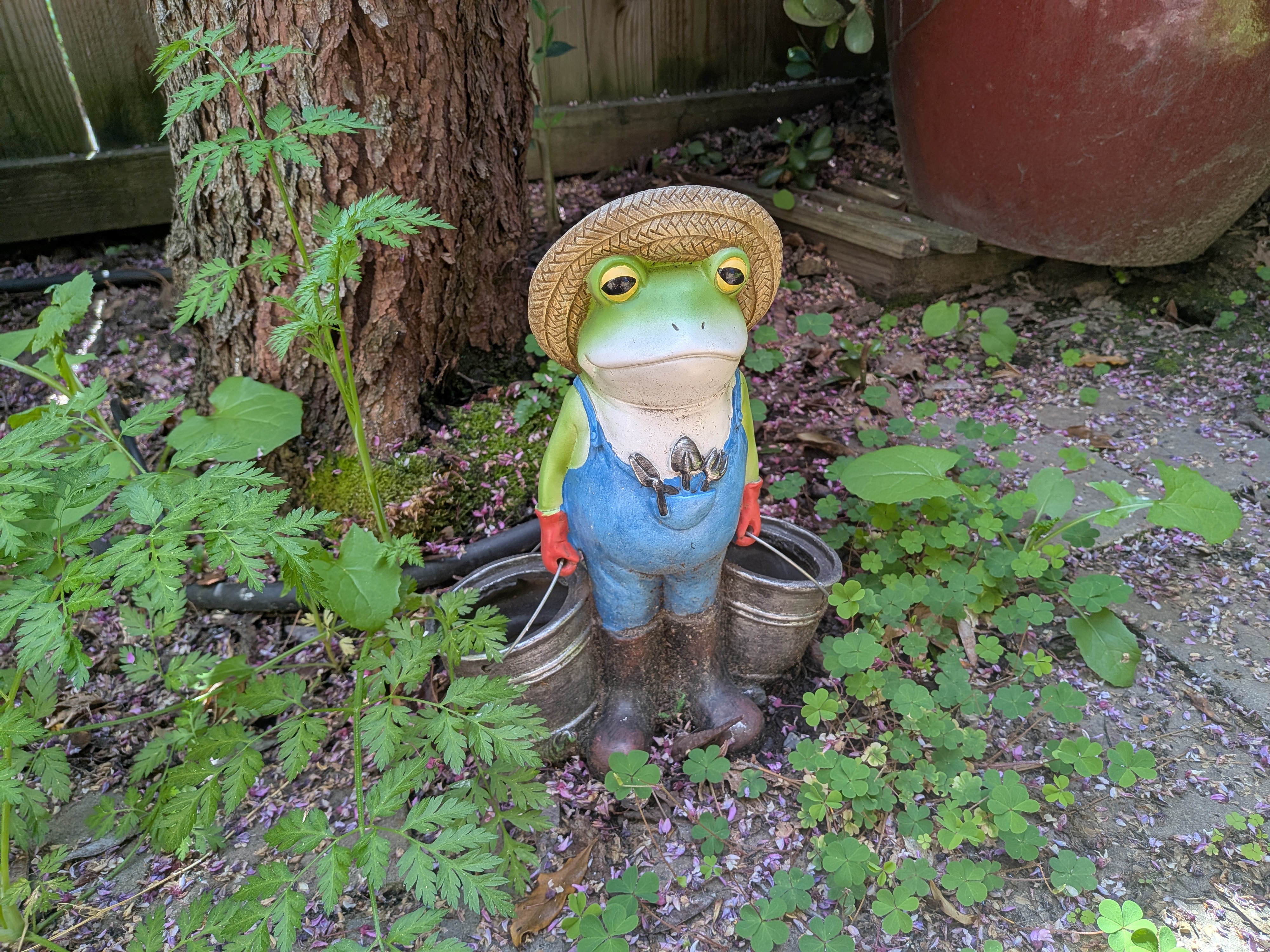



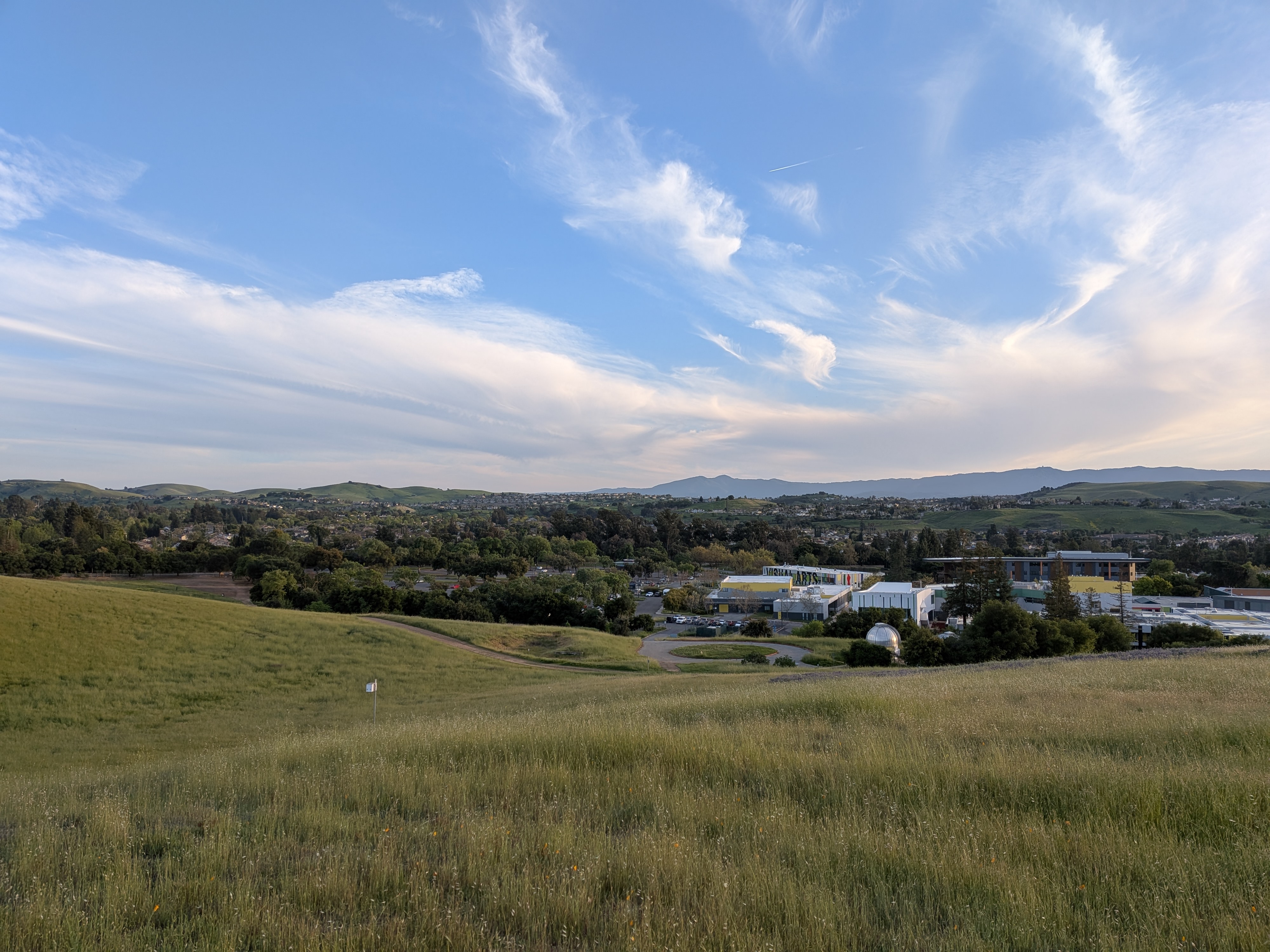
The Google Pixel 9a camera may be downgraded compared to the Pixel 9, but when I looked at my 9a camera samples (I threw a few of them above), the colors are genuinely accurate to real life, without the overprocessing I expected.
People will be excited that the Pixel 9a added Add Me for AI trickery, but I'm a bigger fan of Macro Focus. Get a couple of inches away from a subject, and the viewfinder will show a little green flower symbol and automatically switch to this mode, determining the subject and putting that in focus while the rest blurs out. It's a nice upgrade for Pixel 8a users who upgrade.
The Pixel 9a has its downsides — the lack of optical zoom and struggles with low light, and a general lack of detail compared to more expensive phones — but this is still a Pixel phone, which means you can expect a certain level of quality.
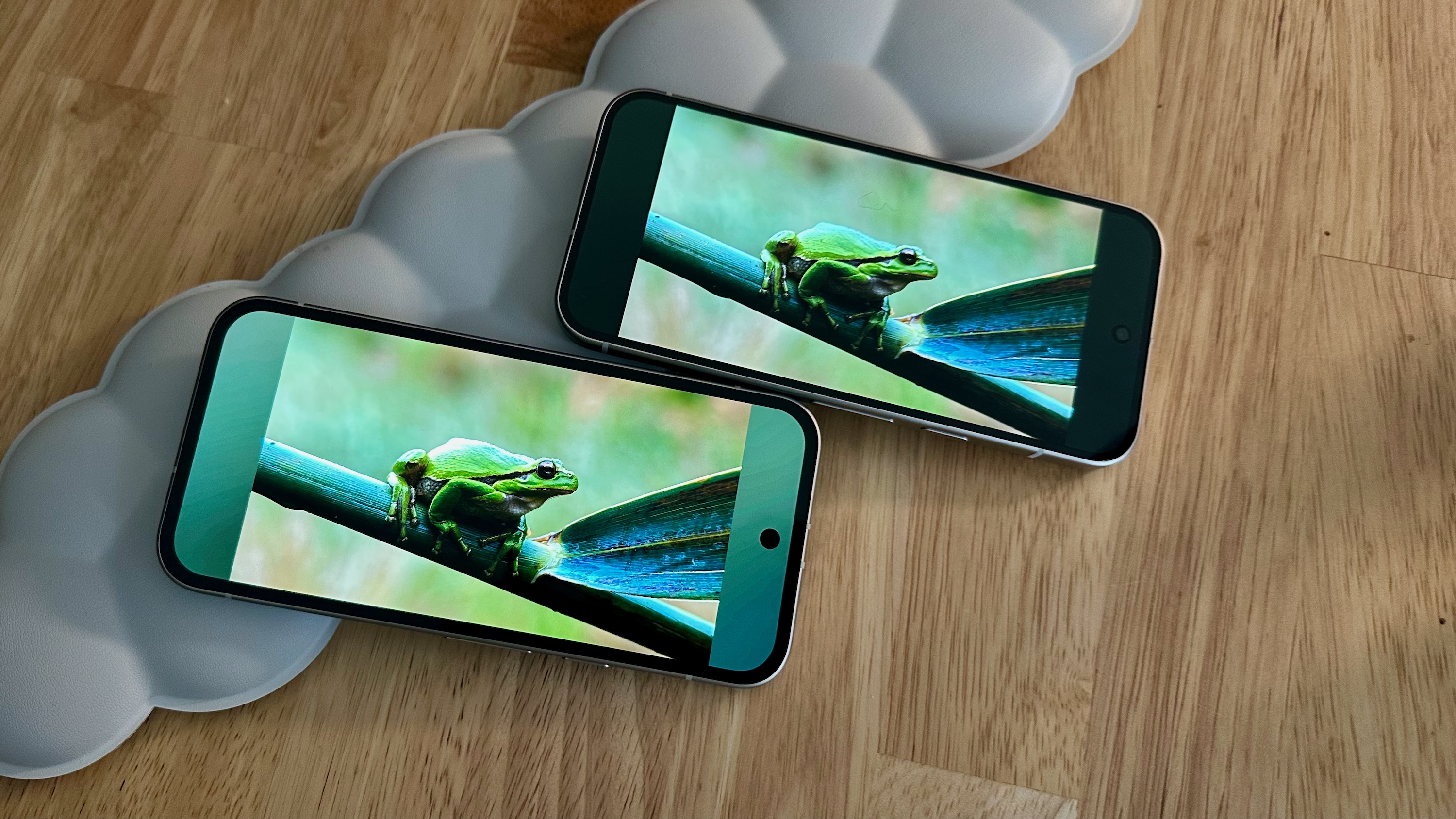
AC's parent company has a testing suite (Future Labs) that Tom's Guide used for more concrete Pixel 9a display quality testing than my typical eyeball tests in its review.
They found that the Pixel 9a hit 2,076 peak brightness, about double what the iPhone 16e offers and nearly double the OnePlus 13R and Nothing 3a Pro. Most importantly, it easily beat the Pixel 8a (1,378 nits), though it lost to the Pixel 9 (2,390).
The 9a also hit an impressive 94.2% DCI-P3, though Tom's Guide found it "doesn’t quite reach the same "iridescence" or color accuracy as the Pixel 9.
In my testing, I couldn't really tell the Pixel 9 and 9a displays apart that clearly, but I could tell that the 9a display was exceptionally bright for a phone in this price range, and this objectively proves it. If you're like me, and like to take your phone on runs in sunny weather, the 9a is a great fit.
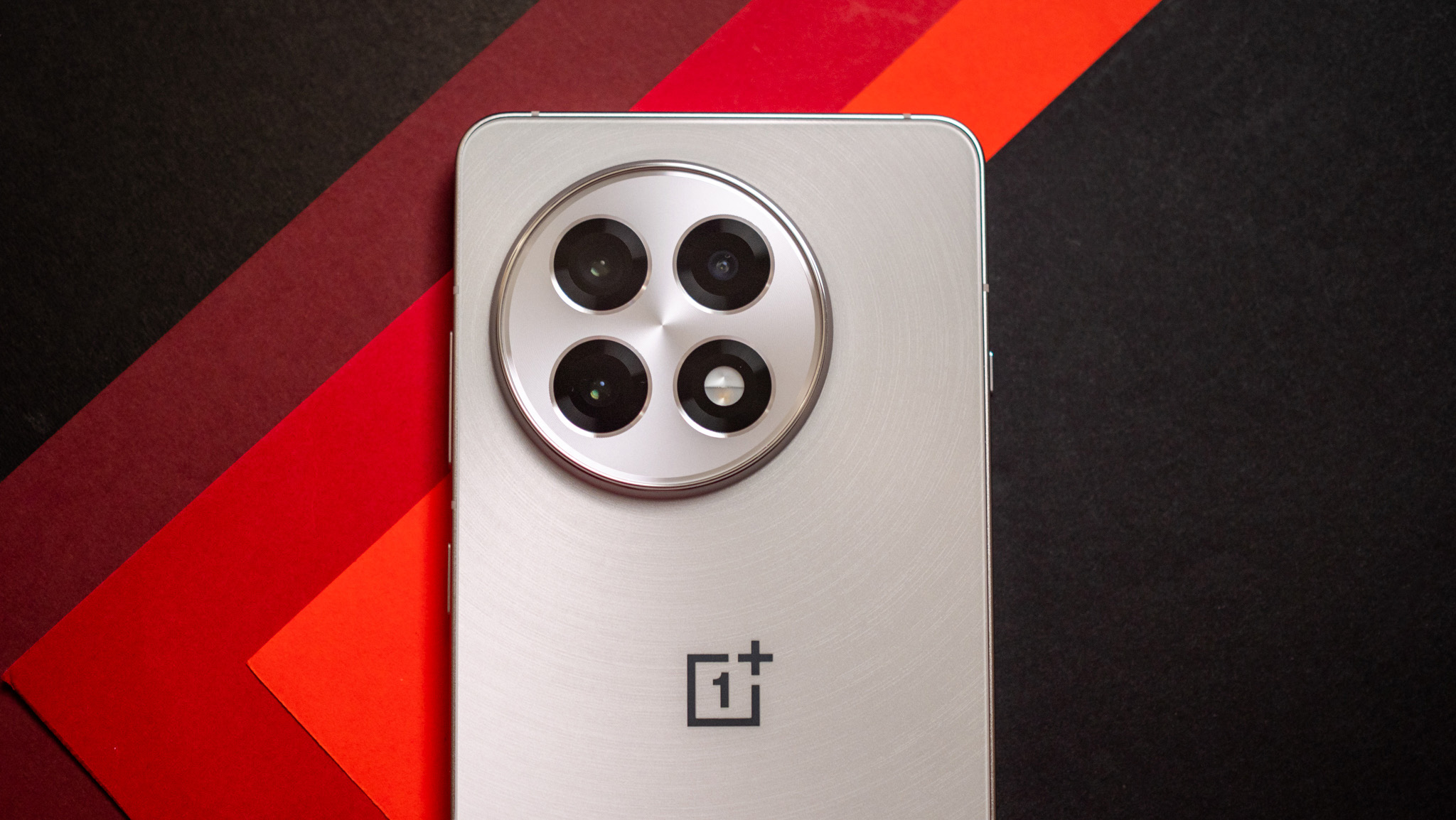
Is the Google Pixel 9a the best mid-range phone of the year? If you let your budget creep up to $599, the OnePlus 13R is a tough challenger because of its Snapdragon 8 Gen 3 chip, 12GB/256GB memory, LTPO display, much-faster charging at 80W, and 50MP telephoto lens with 2X optical zoom.
I'd personally choose the Pixel 9a, simply because it's about an ounce lighter and I'd prioritize compact comfort and a lower price. It also gets three more years of OS updates, though I don't know how many people use A-series phones for more than four years anyway.
Otherwise, most of the other phones in this price range like the Galaxy A56, Nothing 3a Pro, or Motorola Edge can't match the Pixel 9a for specs or AI insights.
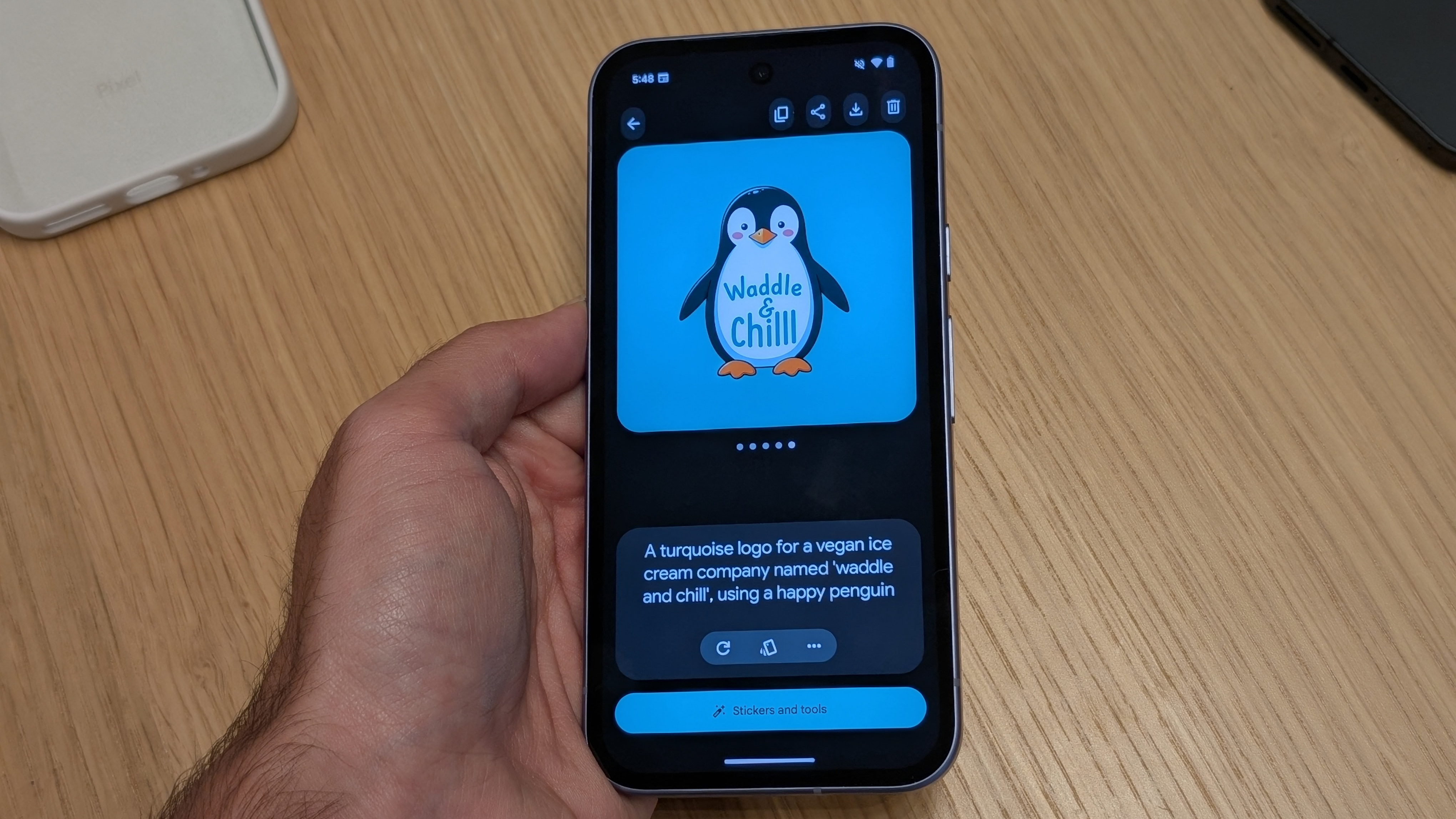
Let's talk more about AI. As I said in my review, if your experience with AI is using Gemini Live, Pixel Studio, or any other app that relies on cloud-based processing, then using the Pixel 9a is no different from a Pixel 9 or 9 Pro. I ran queries on multiple Pixels at once, and the 9a took the same amount of time.
The bigger issue is that the Pixel 9a uses "Gemini Nano XXS" because of its 8GB of RAM, limiting features like Pixel Screenshots that require on-device AI. Even though it has the same Tensor G4 and powerful NPU as its siblings, the Pixel 9a just isn't able to think for itself — or maybe just not well enough for Google to unlock the feature for consumers.
In the long run, a Pixel 9 Pro with 16GB of RAM will probably be able to handle future on-device AI tricks years down the line, but a Pixel 9a, 10a, and so on may be permanently shut out. For AI fans, that may be a bigger deal than missing out on a telephoto lens or other Pro perks.
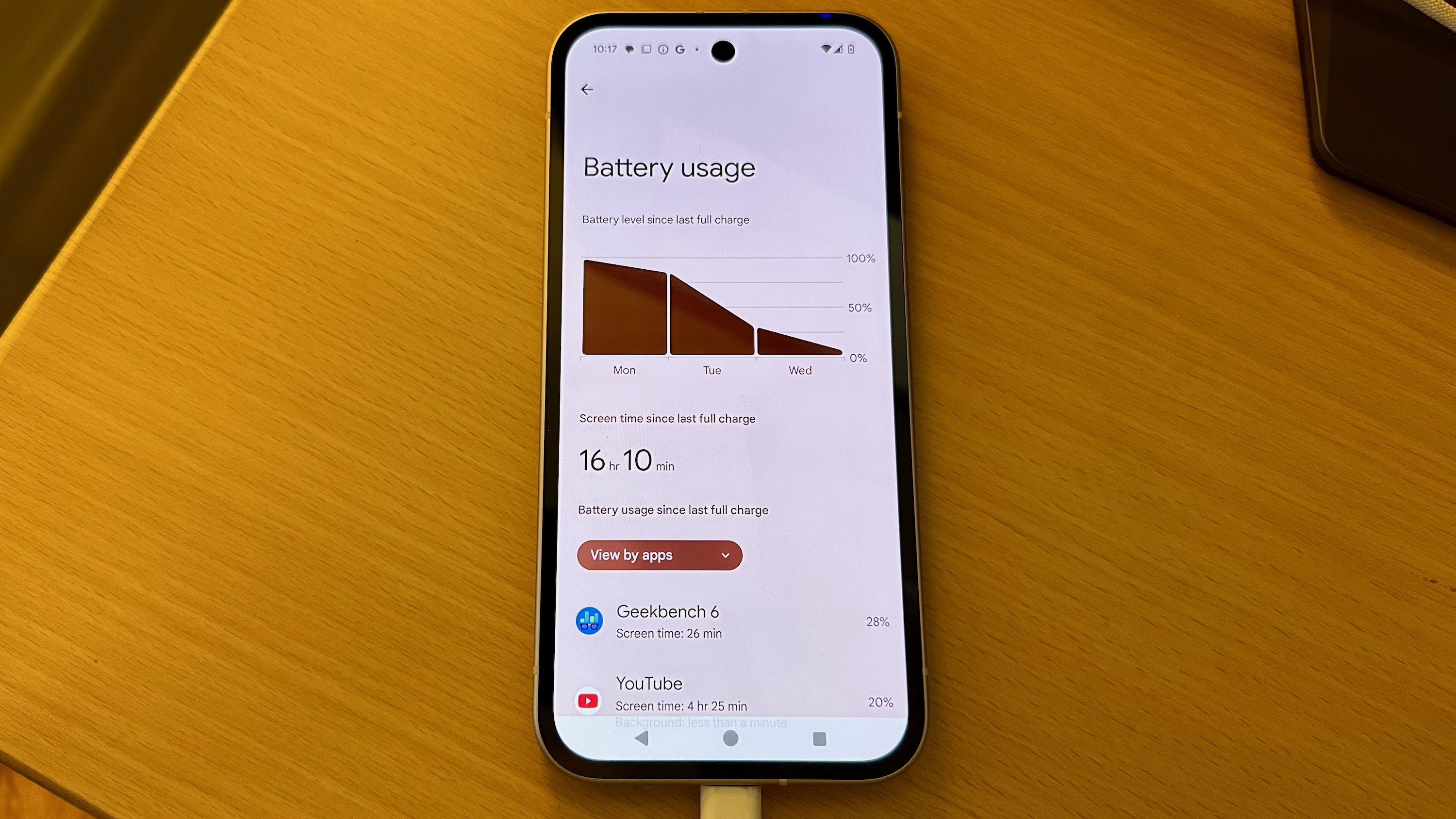
Looking over other sites' Pixel 9a reviews, the harshest comes from Techradar, which gave it a 3/5, said it's "so dang ugly" compared to other Pixels, and claimed that despite the larger battery, it doesn't actually last longer than the Pixel 9 or 9 Pro.
I guess to decide that the 9a battery was no big deal, they did a rundown test and found that both the 9a and 9 both lasted about 13 hours while streaming content. But that's not really indicative of real-world use, and in that case, I found that it really does last about a day and a half with active use, while past Pixels were much more likely to require a daily top-off. Other reviews I've read agree that the battery boost is real.
As for the phone being "ugly as sin," I mean, every phone these days is a "flat slab of plastic broken by a round camera bump." I certainly agreed in my review that this design is pretty boring, and that I miss my Pixel 9's camera bar. But out of the reasons not to buy a Pixel 9a, I'd argue that ugliness isn't really one of them. It just looks like any other Android phone.
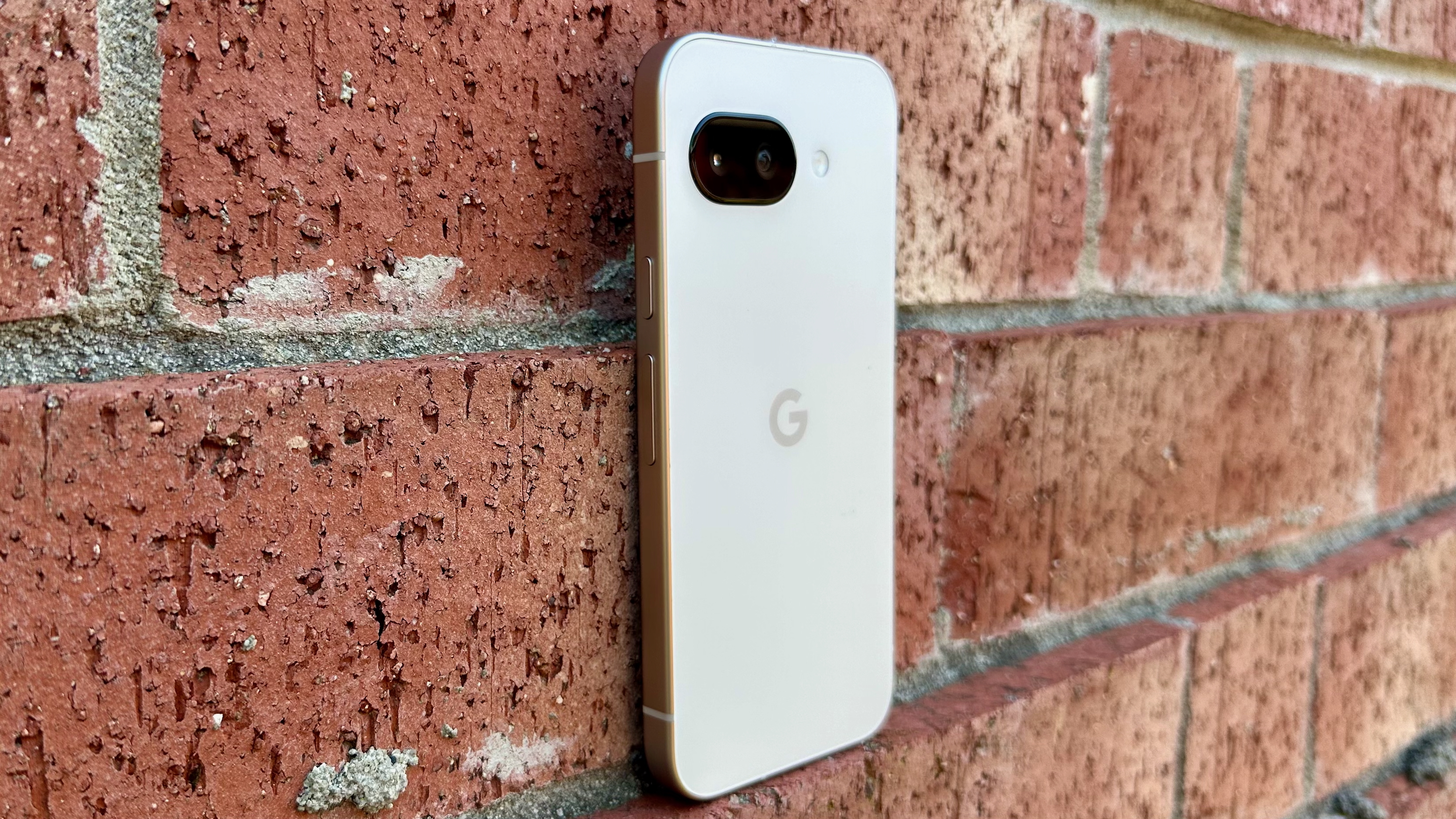
Howdy all, I'm the guy who reviewed the Pixel 9a (Michael Hicks) and I'm taking over this live blog for the next few hours! Do you have questions for Brady and I about the 9a? You can email michael.hicks@futurenet.com with your questions or concerns and assuming the spam filter doesn't eat them, I'm happy to answer them here.
For starters, let's talk software. Android Police covered the fact that the Pixel 9a is missing March Pixel Drop features like Modes, and that you'll probably have to wait for Android 16 for a major 9a update.
On the one hand, I'll point out that the Pixel 9 series launched with Android 14, so a missing feature drop doesn't feel that bad to me. On the other hand, the Pixel 9a is never going to get some Gemini Nano features like Pixel Screenshots because of its 8GB of RAM. So if you're someone who closely follows every Pixel Drop and tests every new AI feature, the Pixel 9a might not be the right fit for you!
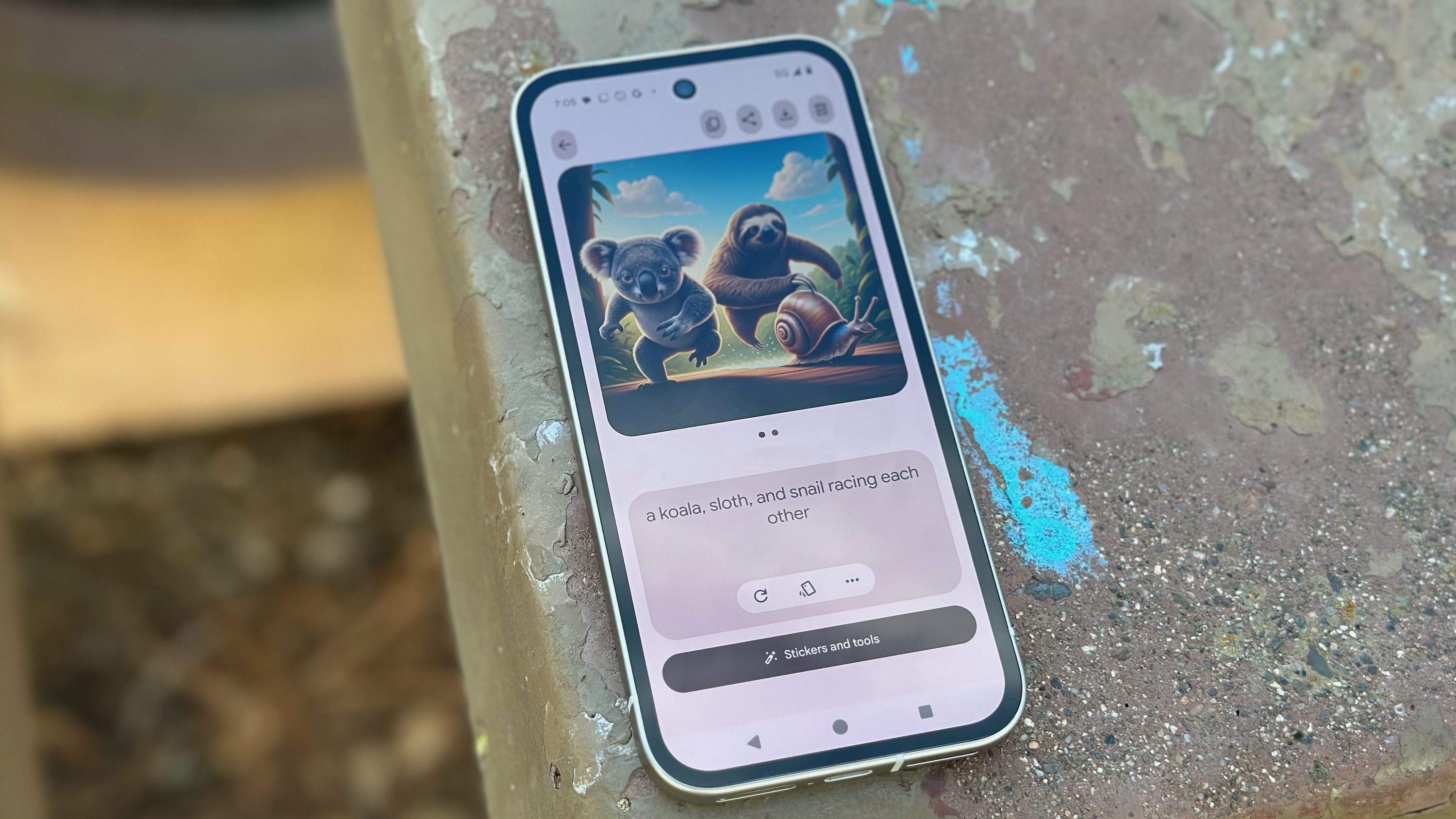
Another great reason to choose the Pixel 9a is longevity. The Pixel 9a gets seven years of OS updates and security patches, "leaving behind most mid-range phones with two or three OS versions at most" as Michael puts it in our review.
Most of the time, lower-cost phones aren't worth holding on to for a long time because they ship with lower-performance processors that simply don't do well after a few years. The processor in the Pixel 9a is not only fast enough to last for several years, but Google guarantees updates through 2032. That's simply not the norm on other phones.
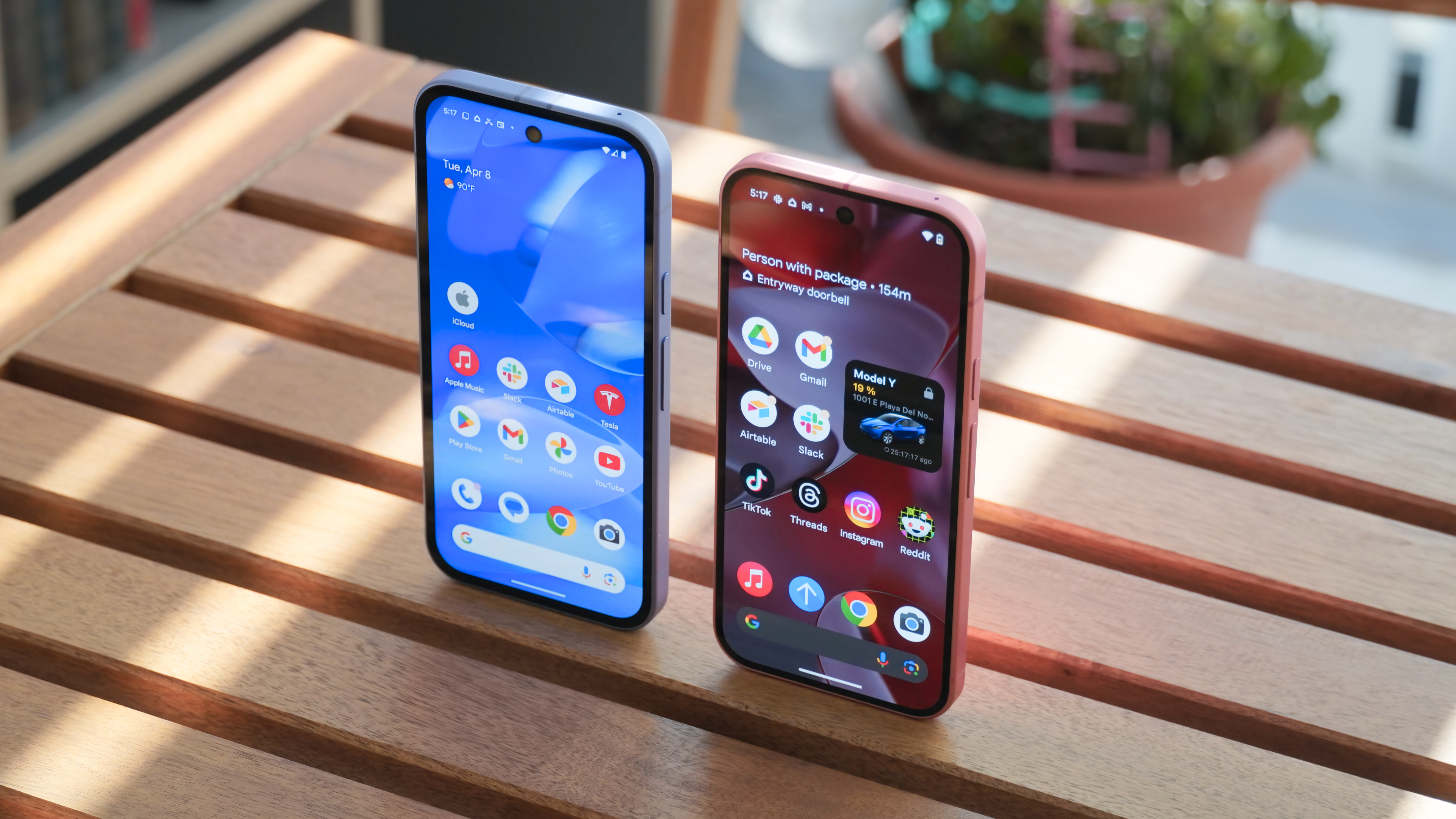
Great performance isn't common in a $500 phone these days, but Google has bucked that trend since the Google Pixel 6a with its Tensor G1 processor. Now that we're on Tensor G4, Google has worked out the thermal issues and ensured that this is still class-leading performance in most cases. At the least, the Tensor G4 is a much better fit for the $500 Pixel 9a than it is in the $999 Pixel 9 Pro, as Michael Hicks pointed out in our review.
But don't just take our word for it. Engadget's review echoes the same sentiments, citing multicore performance on par with the more expensive Pixel 9 series. The only lament made is the reduced amount of RAM, which means power users will likely be less happy with the Pixel 9a than the mainline series, which features 4GB of RAM more than the 9a.
There's also a possibility that some AI features in the future might not make it to the Pixel 9a, as we've seen older phones skip newer AI features due to lack of RAM. Ironically, Google's lowest-spec phone features as much RAM as the most expensive iPhone so, at the very least, we don't expect to see the Pixel 9a fall behind iPhones in terms of great software features.
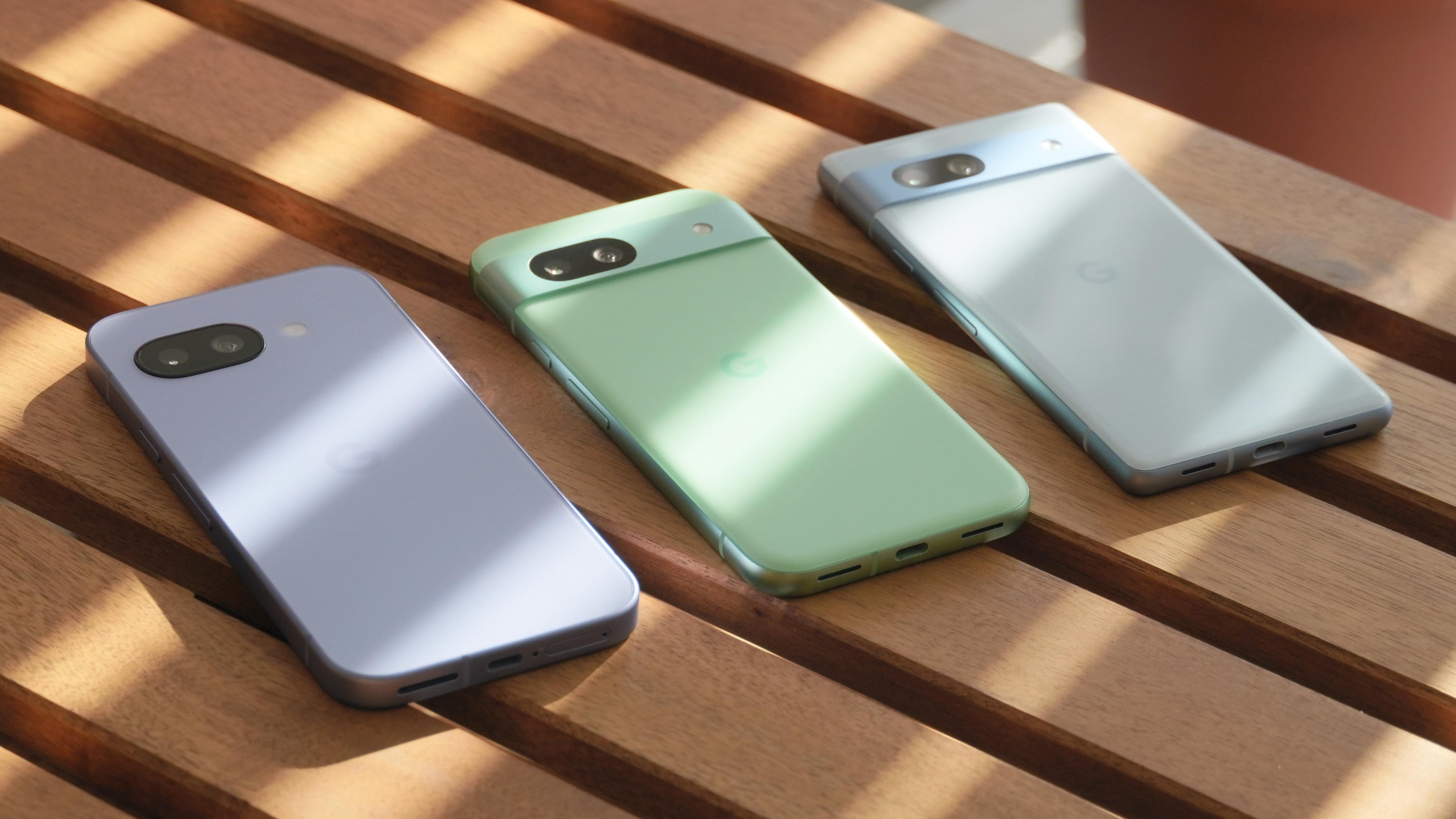
If you need any proof that "different strokes for different folks" is the truth, look no further than 9to5Google's review of the Pixel 9a. Abner Li says, "Google has created my new favorite phone design," citing the almost-flat, camera-bar-less design as the reason.
This design change, coupled with the matte glass back and the flat side rails, makes it much nicer to hold than the mainline Pixel 9 series, according to Abner. "The Pixel 9a feels like you’re just holding a screen" might just be my favorite quote from the review, as it's easily the most positive thing I've heard from anyone regarding the Pixel 9a's incredibly flat and sterile design.
What might be more interesting is Abner's love for the uniformity of the design. "It results in such a clean form however you’re handling, like when fishing out of your pocket or bag, or gripping." Despite that uniformity, the matte glass on the back feels different enough from the shiny glass on the front that "you won’t mistake the two materials." Plus, matte glass isn't a fingerprint magnet like the shiny glass on other Pixel 9's.
I far prefer the rounder design of the Pixel 8a and love the camera bar on older Pixel phones, but it's clear that some people simply like different things. Will that be you? Let us know!
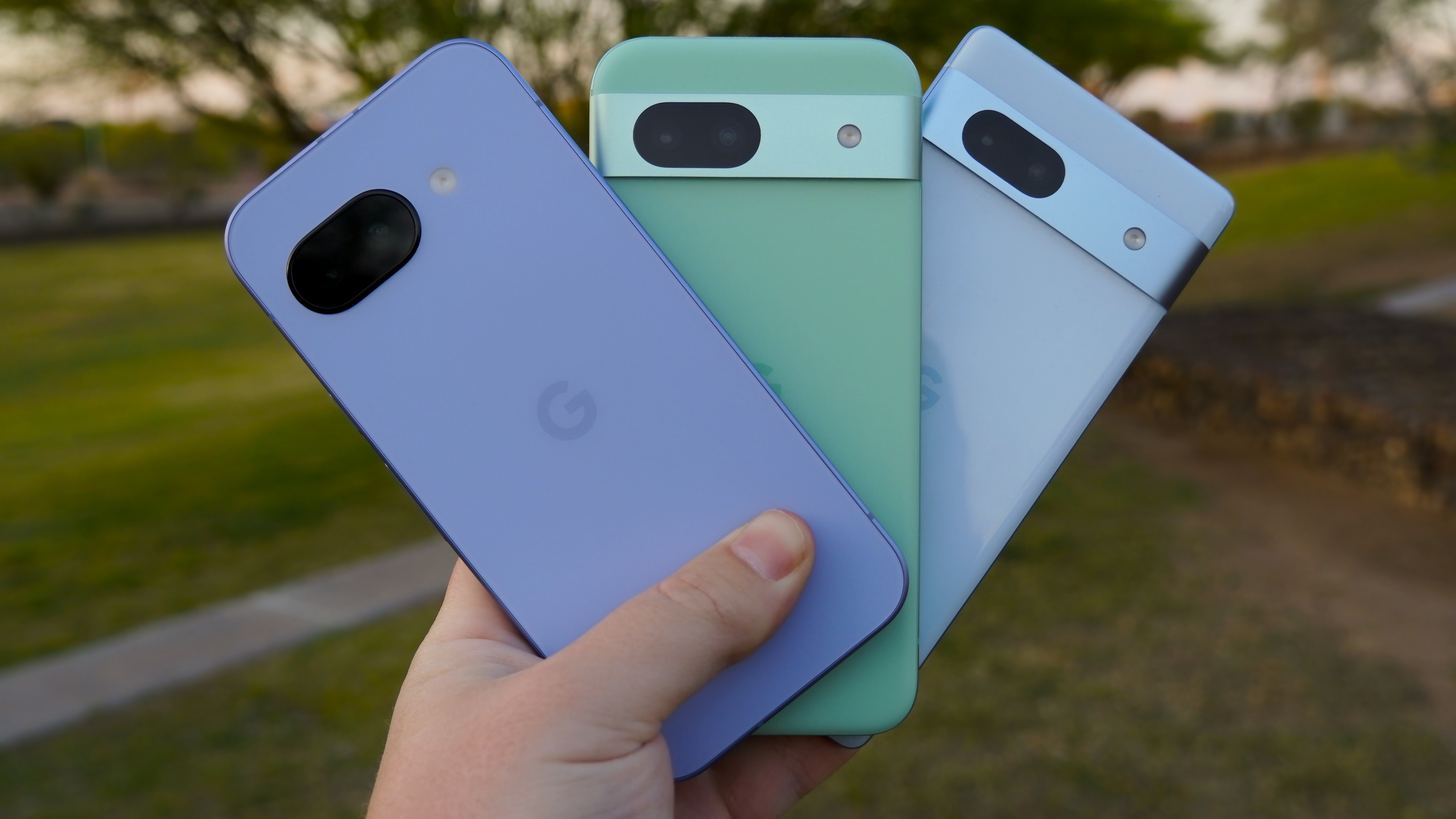
If you need any one reason to choose a Pixel 9a over other Pixel phones, it's the battery life. Google Tensor processors have never been very efficient and that has resulted in poor battery life, but big thermal changes and an even bigger battery make the Pixel 9a the Pixel phone to get for battery life.
Android Central's Michael Hicks and Brady Snyder both said they were able to get around 2 days of use out of a single charge, something that's absolutely never been true of any Pixel phone to date. Most Pixel A-series phones struggled to last just one day, much less into the second at all.
That's all while packing the exact same Tensor G4 processor as all the more expensive Pixel 9 series phones. Yes, that even includes the $1700 Pixel 9 Pro Fold.
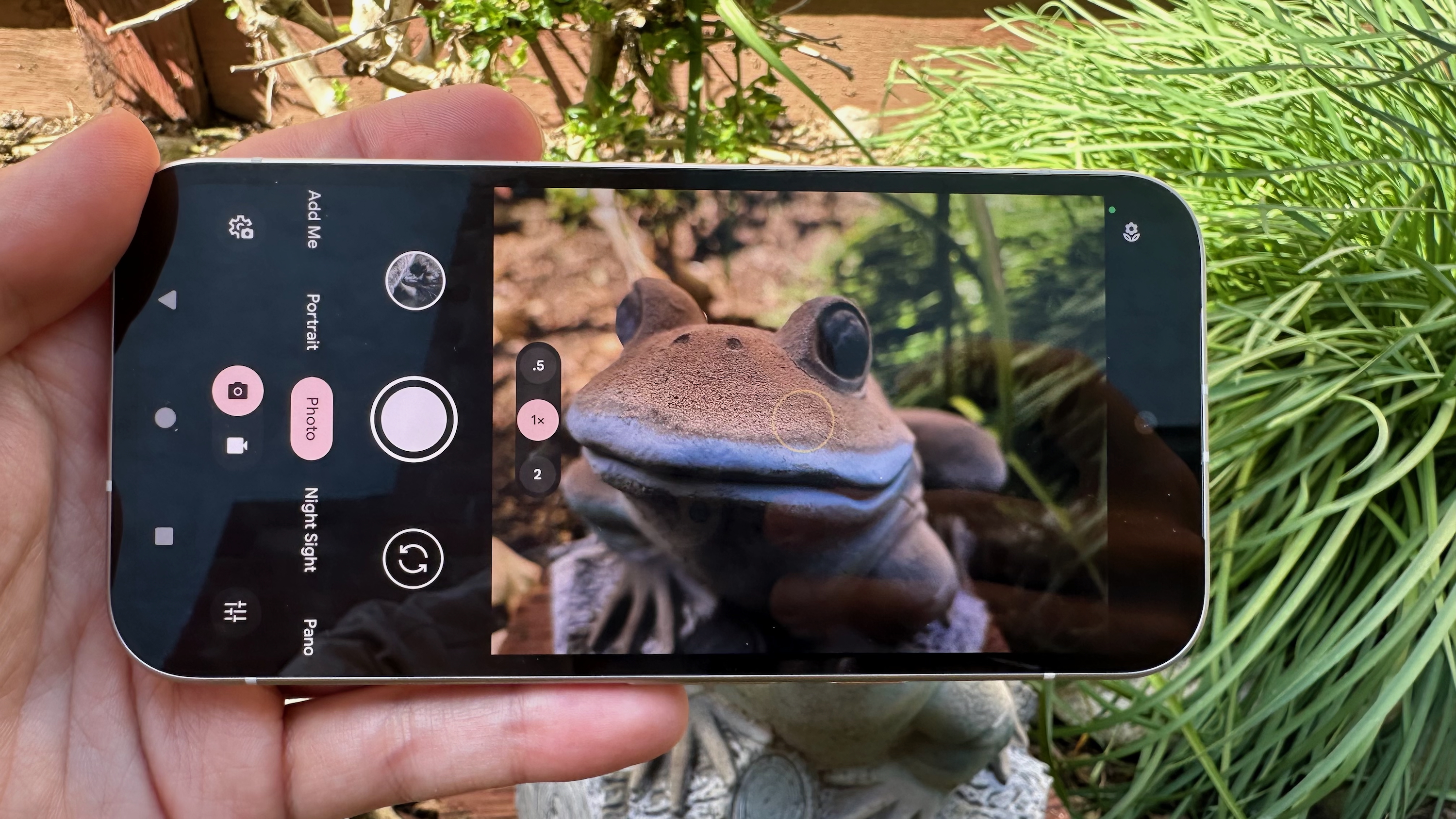
When Apple launched the iPhone 16e last month, many were left scratching their heads. Not only was the phone too expensive for what it offered, but Apple only shipped it with a single camera on the back. As Android Authority points out this morning, Apple's phone looks even worse now that the Pixel 9a is out.
While both the Pixel 9a and iPhone 16e feature a similar 48MP main camera, Google's photo processing has outpaced Apple's for some time. The Pixel is better at capturing subjects in motion than an iPhone — I've named Pixel phones the best phones for parents for years because of this — and the more color-accurate Pixel 9a camera also helps make photos look more like real life.
And while the main camera is definitely an upgrade over the iPhone 16e, the Pixel 9a's secondary rear camera is the real star of the show here. Not only is it a super high-quality ultrawide camera but it also doubles as a macro camera that delivers some of the best macro shots you'll find on any phone. That's not something your ordinary $500 phone can claim, and definitely not something the $600 iPhone 16e can do at all.
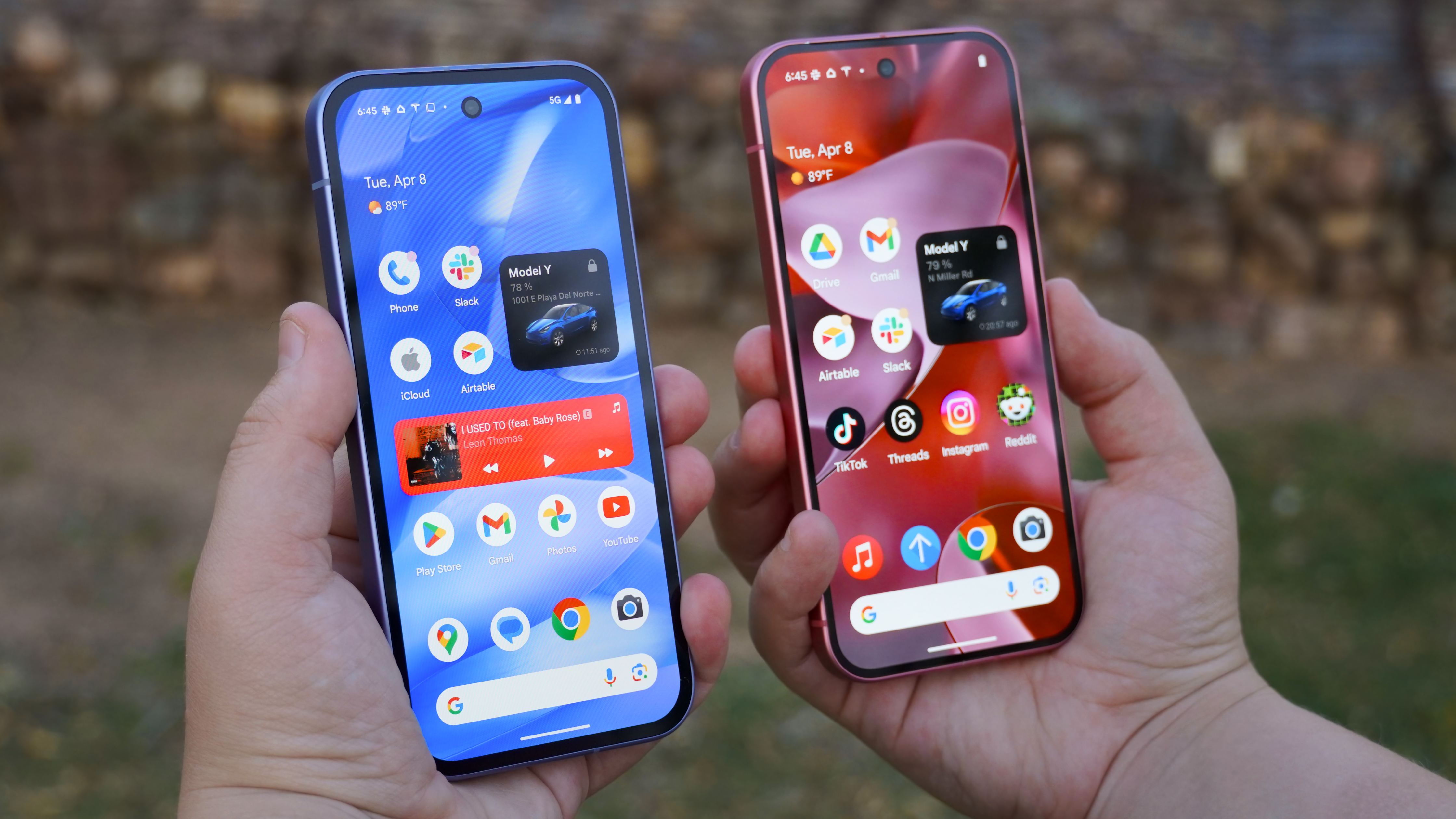
While the Pixel 9a doesn't fall into the "small" phone category with its 6.3-inch display — it matches the Pixel 9 and is larger than the 8a — Michael noted that it was easier to hold than most budget phones in its class. Some of that is thanks to weight, but a lot of it is down to the design.
Aside from making it flatter, Google also improved the Pixel 9A's water and dust resistance rating over the 8a, giving it the IP68 rating of its full-priced flagship models. Unfortunately, this one uses older Gorilla Glass 3 on the front and back, so we don't recommend going caseless unless you're ultra careful with your phones.
A good Pixel 9a screen protector will keep it protected for a long time to come. Plus, unlike some other screen protectors, these won't interfere with that ultrasonic fingerprint sensor under the display.

Back on the design, there's sure to be a love/hate relationship with Google's changes. No, I don't mean the camera bar, mean the flattening of the overall phone. Gone are the smooth curves and ergonomic edges of the Pixel 8a's river rock design and, in their place, are very flat sides and a totally flat front and back. This makes the phone feel like a slate rather than the "friendly" design of last year's model.
But, as Google previously noted, most people won't notice the design change because it's going to be in a case. There are already some amazing Google Pixel 9a cases to grab, so if that's your plan, the wider, flatter Pixel 9a will feel just fine.
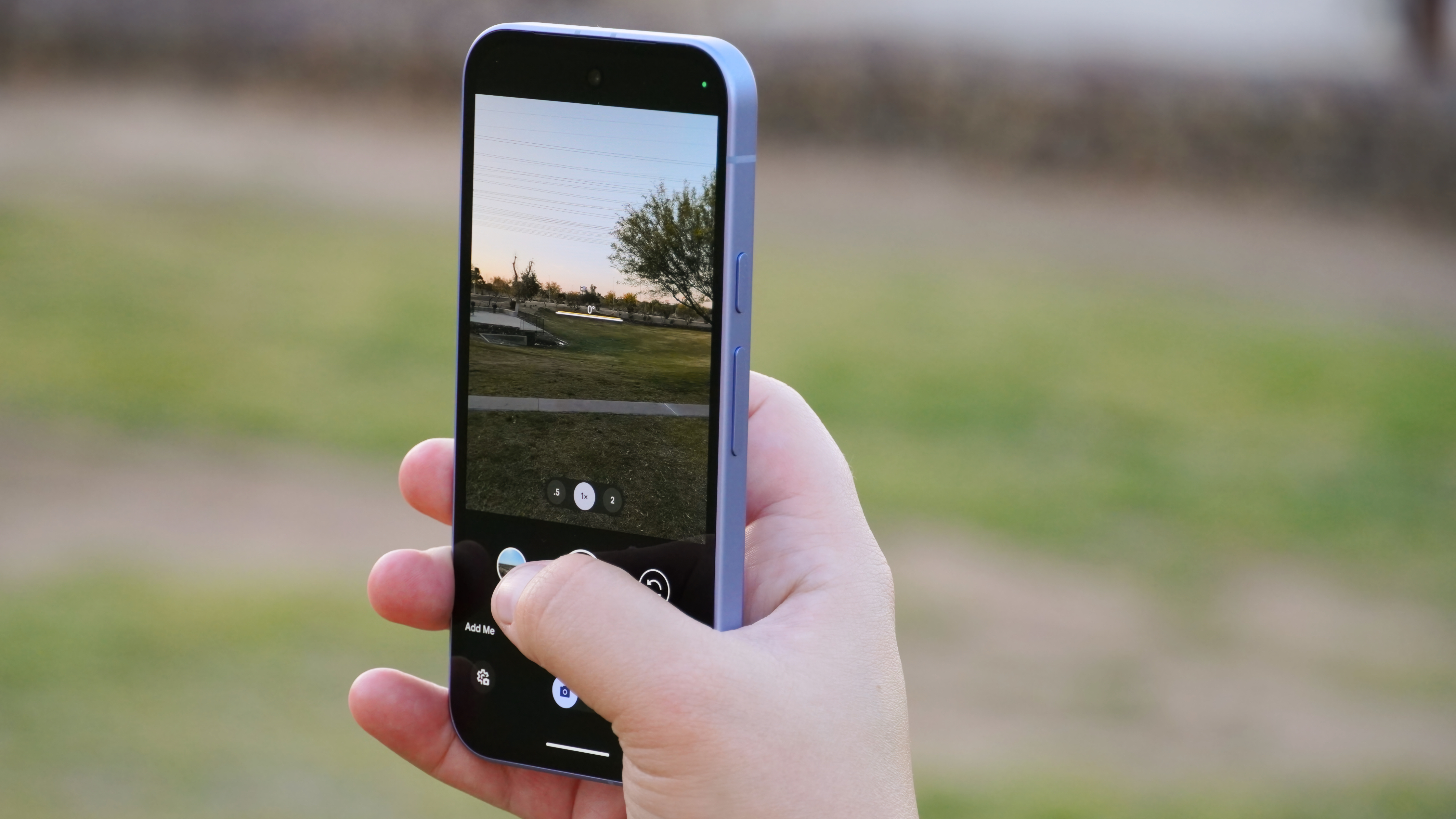
Google swapped out the 64MP main camera from the Pixel 8a and replaced it with a 48MP camera on the Pixel 9a. While this sounds like a downgrade on paper, the 9a actually improves quality over the 8a in some scenarios. Brady Snyder conducted a full Pixel 9a camera review for us, which breaks down all of the differences.
Here's the TLDR version for now if you don't have to time to look at the longer article. The Pixel 9a noticeably improves color science over the Pixel 8a, delivering some of the most accurate colors from a Pixel camera in years. Daytime shots look incredible as a result, and you'll enjoy great AI features like Best Take any time of the day. Plus, the new Macro Mode turns out jaw-dropping macro shots.
In low light, there is a slight drop in sharpness and detail versus the Pixel 8a but, as Brady points out, you'd need to zoom in a lot to notice anything different. All in all, this is the Pixel camera you're looking for, and it's guaranteed to outperform anything in this price segment.
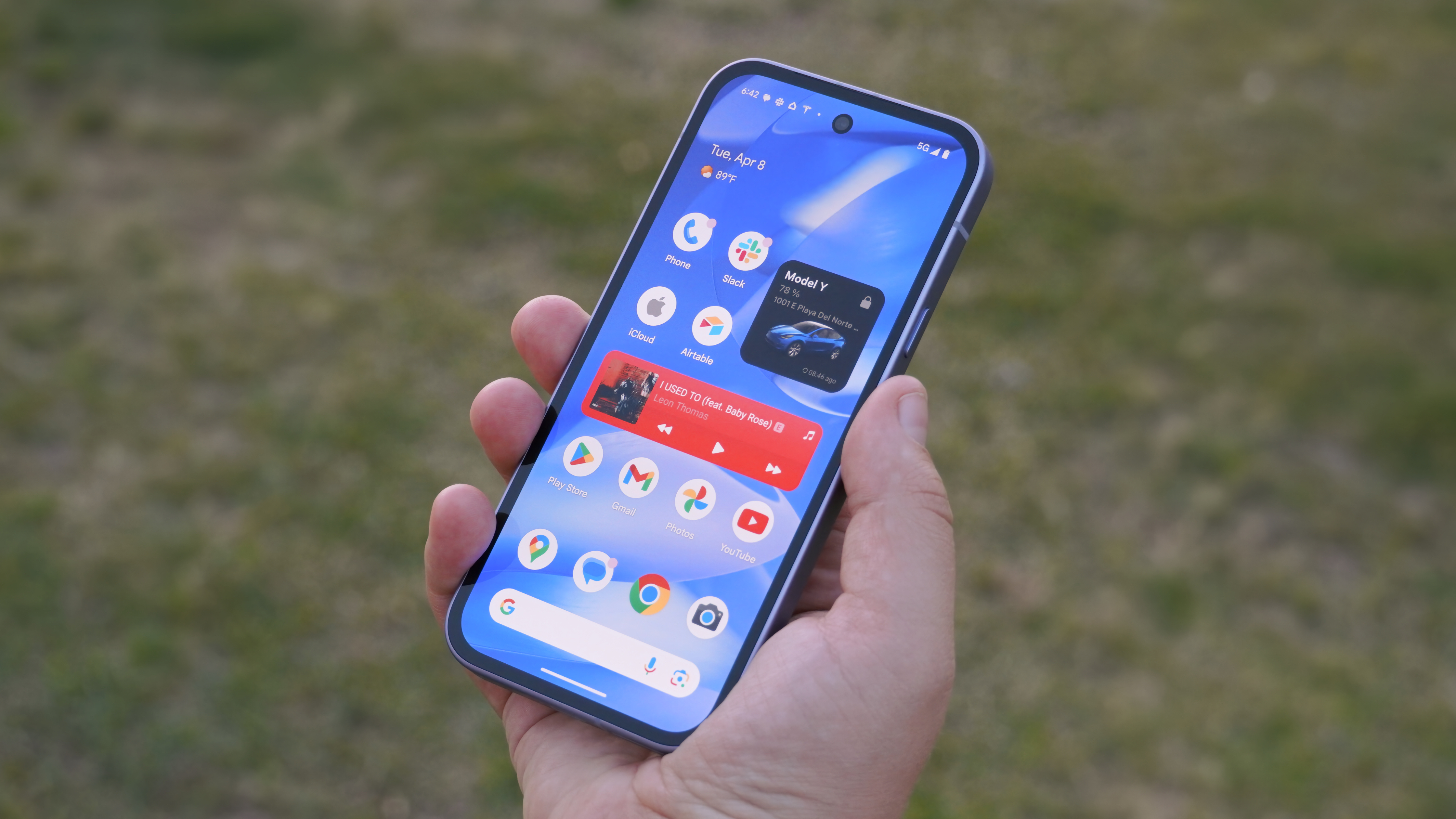
Alright, let's talk about that big design change first. There's no shortage of controversy around Google removing the camera bar on the Pixel 9A, but Google says the change was made to prioritize function over form. The phone is thicker than the Pixel 8A and looks a lot less unique, but it comes with several advantages because of the change.
Google broke the Pixel 9A down to its base components, added a huge vapor chamber to keep the Tensor G4 extra cool, then slapped a giant battery on top. That meant adding the camera bar would have made the phone unacceptably thick, by Google's standards, so the bar had to go. Thankfully, the left-aligned camera module didn't result in a wobbly phone despite the camera bar removal, which is a big sigh of relief.
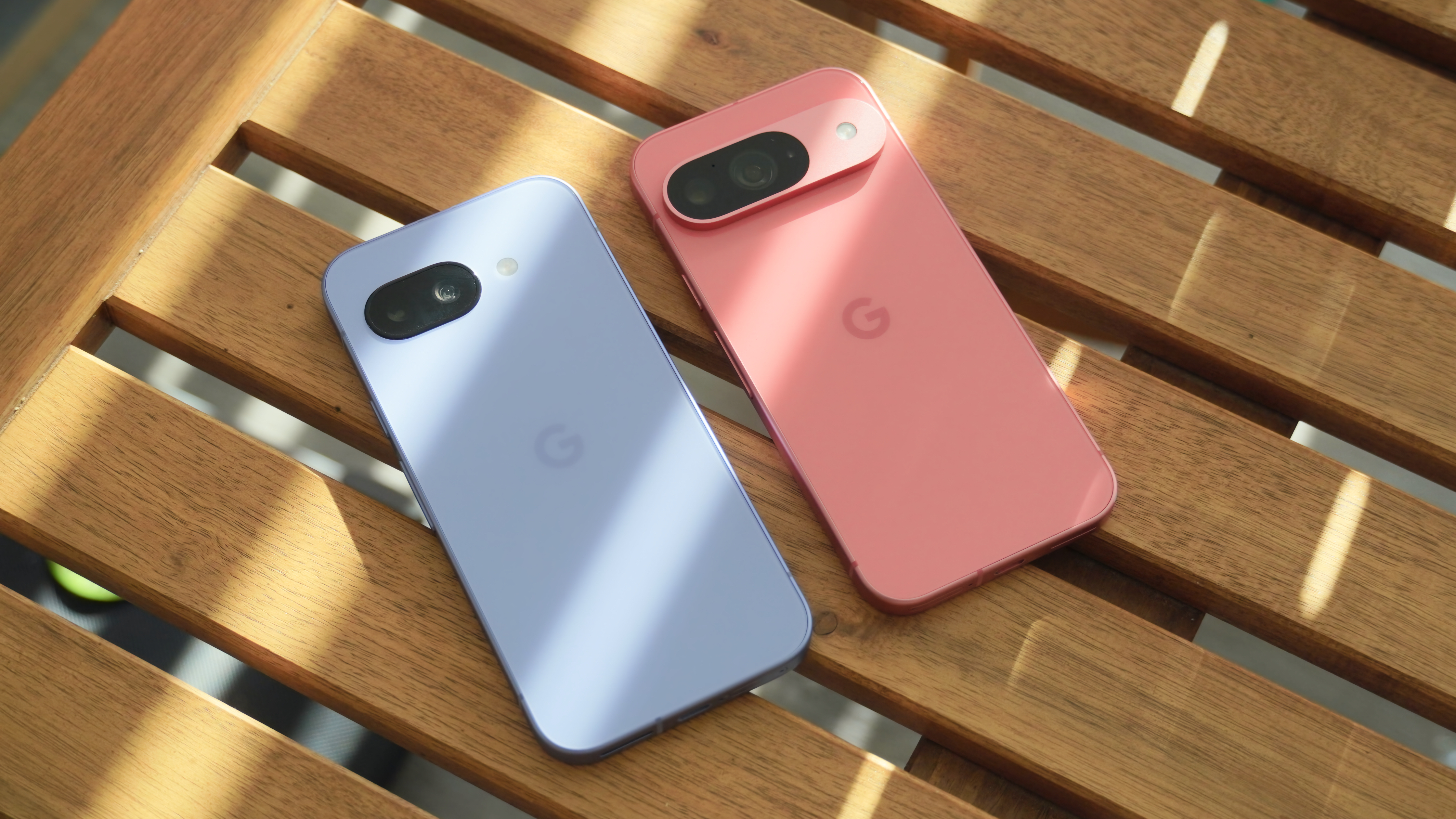
If you're not an AT&T customer or don't want to switch to AT&T for some reason, other carriers have good deals worth taking a look at, too. T-Mobile is also offering a free pair of Pixel Buds A-Series deal when you get a Pixel 9a through the Uncarrier. Plus, the Pixel 9a is free when you add a new line with T-Mobile, which might be even more cost-effective than AT&T's deal, depending on your plan with the company.
US Mobile is offering a $799 bundle deal that includes a regular Pixel 9 PLUS a Pixel 9a. You'll need to opt for an Annual Starter or Premium plan through US Mobile to get the deal, but it's pretty slick being able to get two amazing Pixel 9 phones for this price.
Lastly, Verizon is offering the Pixel 9a for free to all new customers. Existing customers won't get the deal, which is always sad, but Verizon does offer a rather excellent Google One AI Premium add-on for $10 a month, which includes all the amazing features of Google's $20 plan — like full access to Gemini Live and tons of cloud storage — for half the price.
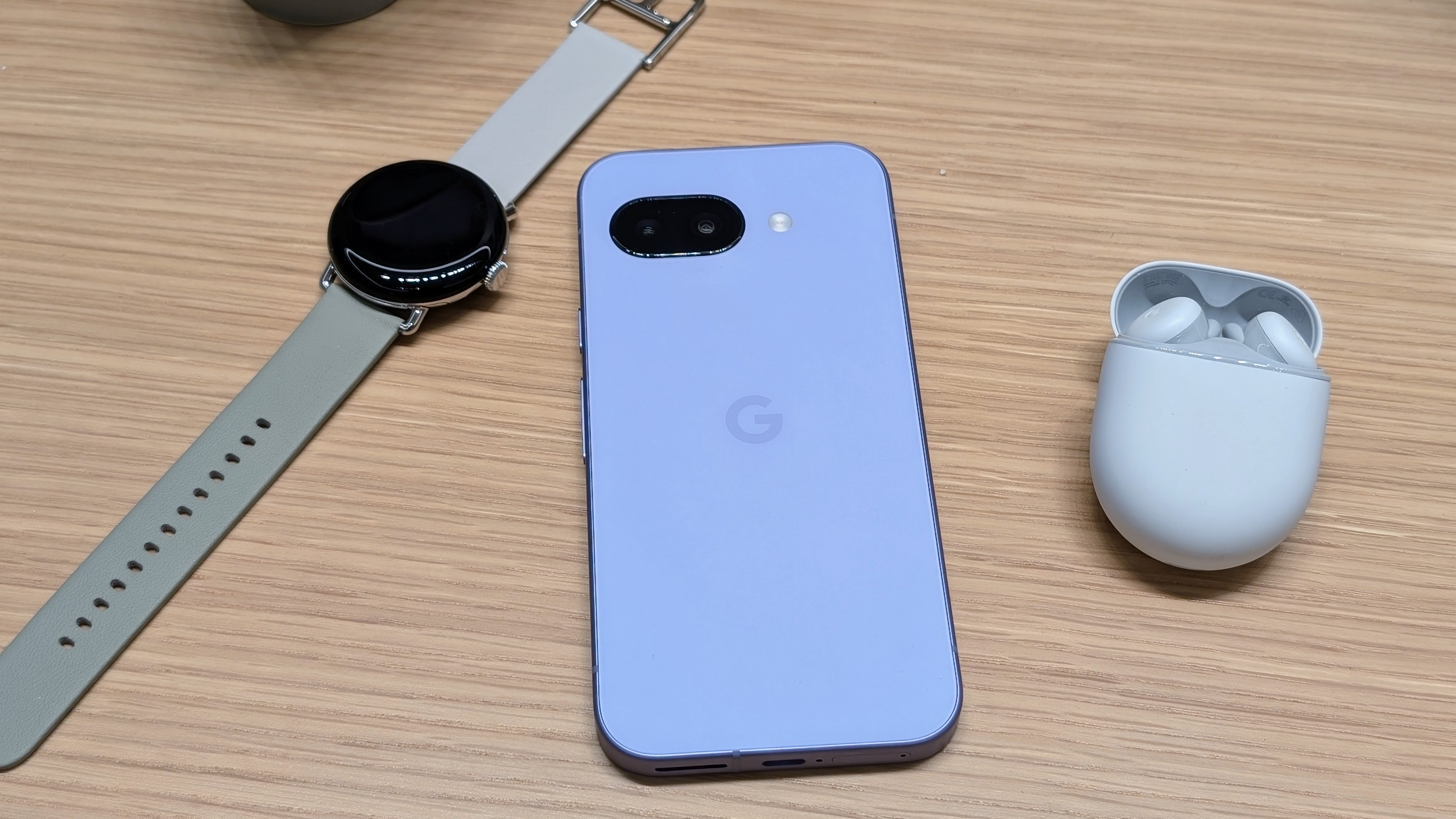
If you live in the U.S. and are looking for a great Google Pixel 9a deal, all the major carriers (and even some smaller carriers) are running great launch-day sales. THE MOST RIDICULOUS deal is from AT&T, which is selling the Pixel 9a for just $2.99 a month with any unlimited plan. That's on a 36-month payment plan, but that only brings the TOTAL cost to $107. Keep in mind the Pixel 9a retails for $499, and you think you've gotten the deal of a lifetime, but AT&T isn't done.
Grab a Pixel 9a today from AT&T, and they'll also toss in a pair of Pixel Buds A-Series for free. That gets you a pair of legit fully wireless earbuds plus Google's best A-series phone yet for roughly $500 less than you'd pay if you bought them outright. It's impossible to find a better deal than this!
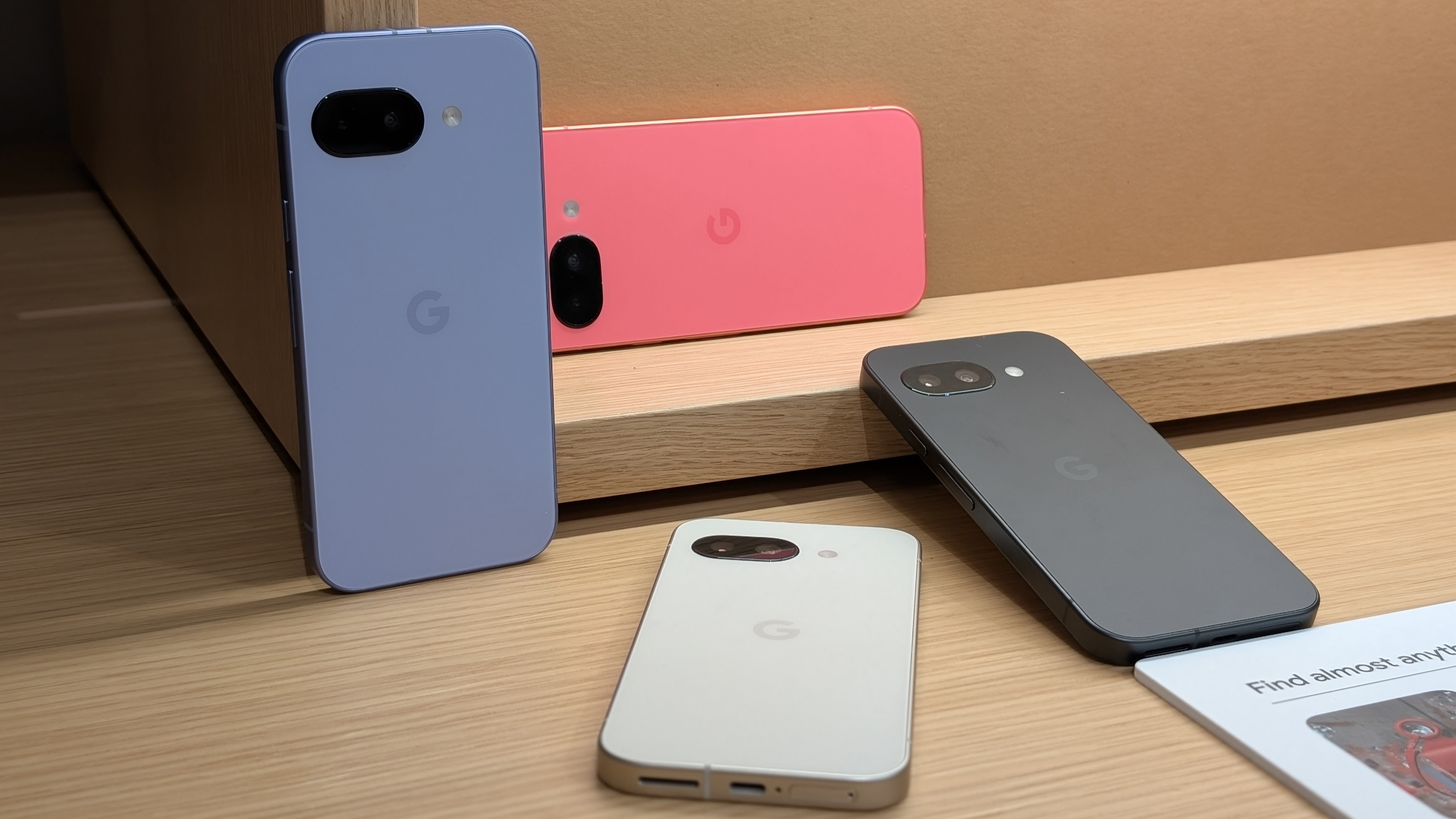
Before we dive into some of the phone's features, let's talk pricing. The Pixel A-series has long prided itself on delivering extreme value at a mid-range price. That means renowned Pixel camera quality, one of the fastest processors for the price, and seven years of software updates that keep it feeling fresh for a long time.
You can grab the phone unlocked from Google for $499 / £499 / €549 / CA$679 / Rs 49,999, which nets you 8GB of RAM and 128GB of storage. Roughly $100 more will double your storage, which could be helpful if you're planning on keeping it the full seven years. That's 2032, to put things in full perspective!
But if you don't want to buy it straight from Google for some reason, that's no big deal. You can also find the phone unlocked at Amazon, unlocked or with a carrier deal at Best Buy, or elsewhere in four excellent colors.
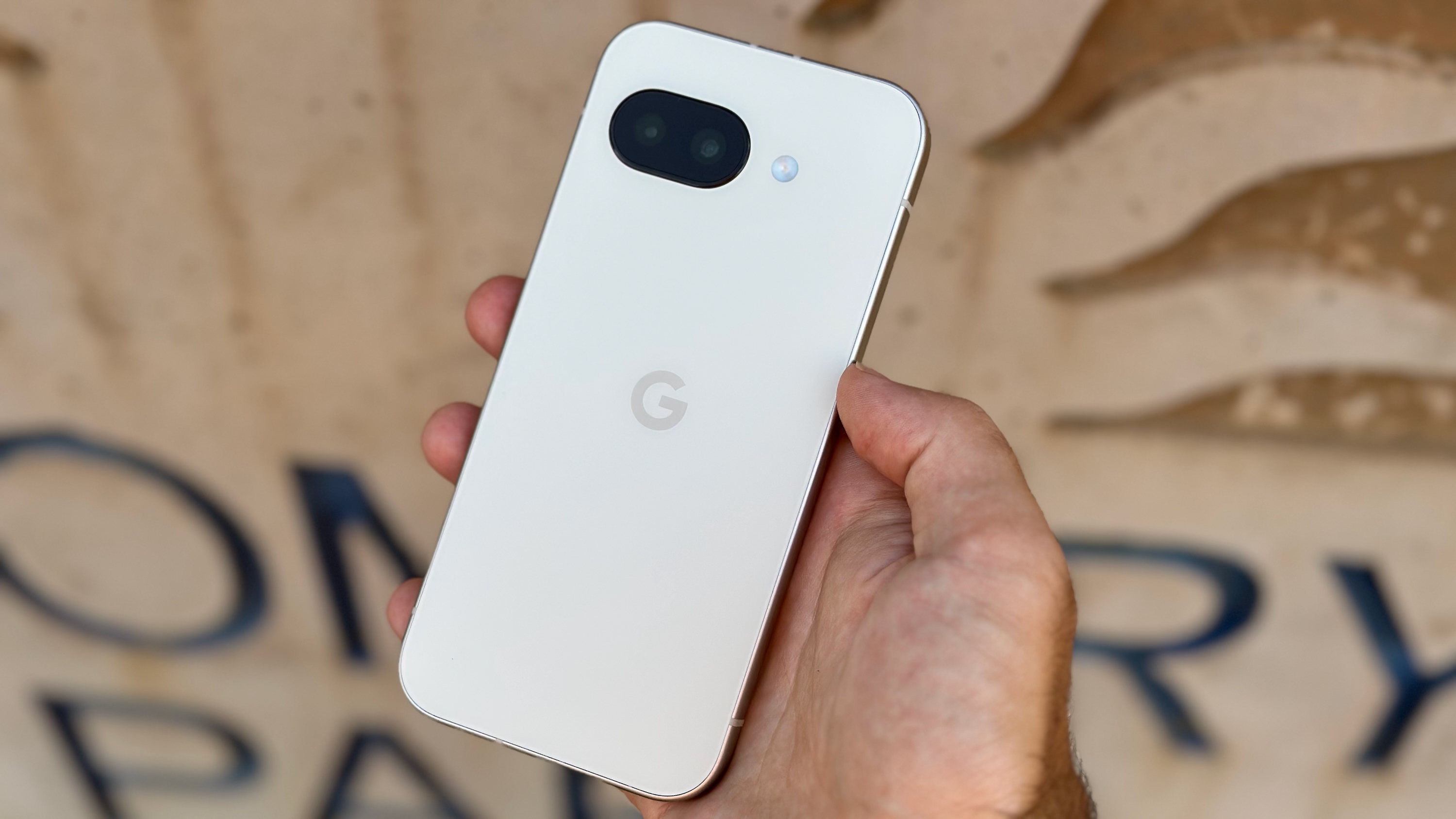
After a few weeks' delay, the Google Pixel 9a is finally here! We've loved the Pixel A-series for years, but this year gave us reason to worry. In addition to that "component quality issue" that caused the delay, there has been concern about performance issues, limited RAM, and the controversial new design language.
Thankfully, our reviewer, Michael Hicks, reports that Google's latest budget flagship was worth the wait. With the best battery life of any Pixel to date — yes, better than all the more expensive models — plus the same Tensor G4 processor as the more expensive Pixel 9 phones, it's hard to say no to the Pixel 9a.


